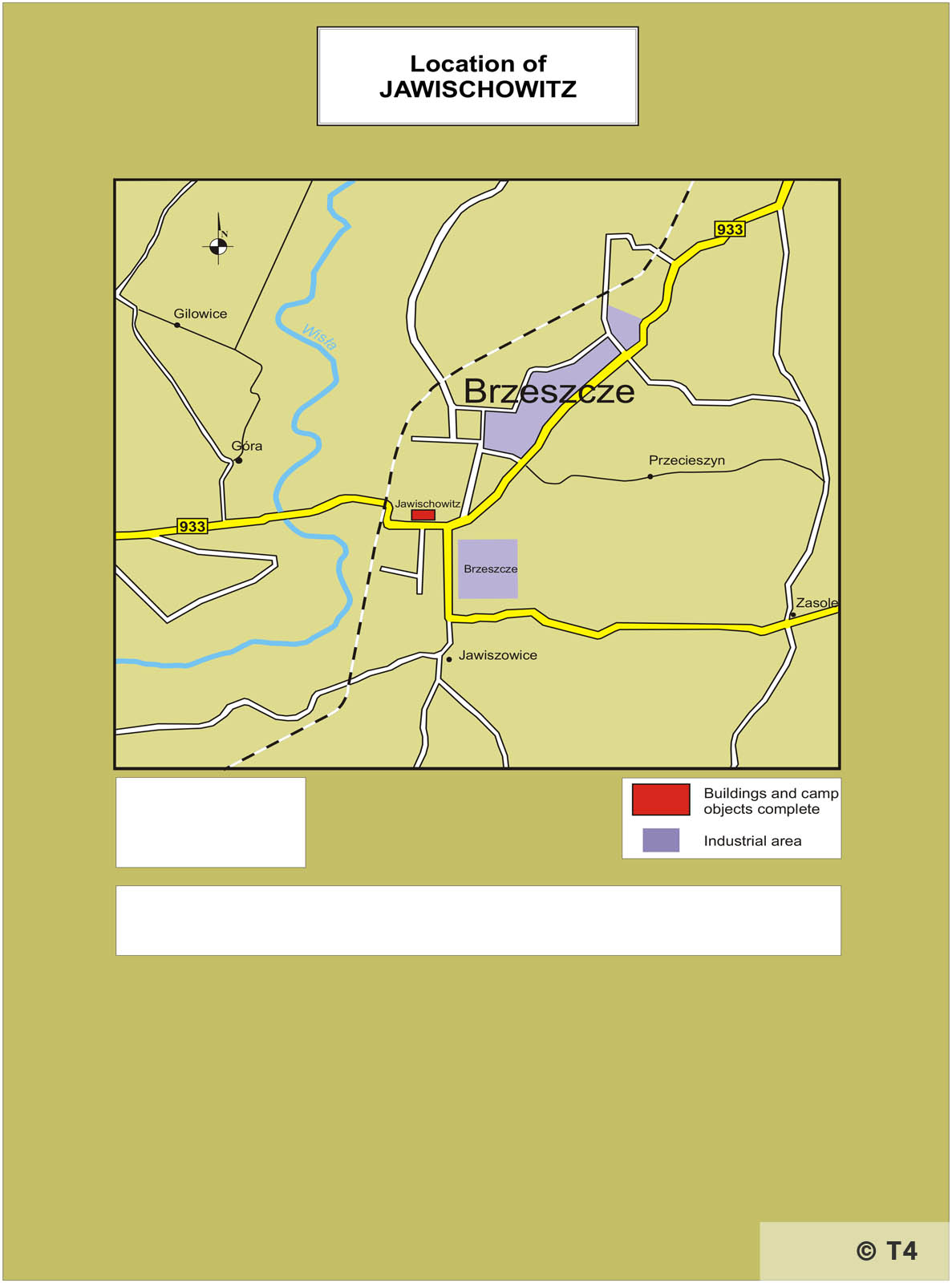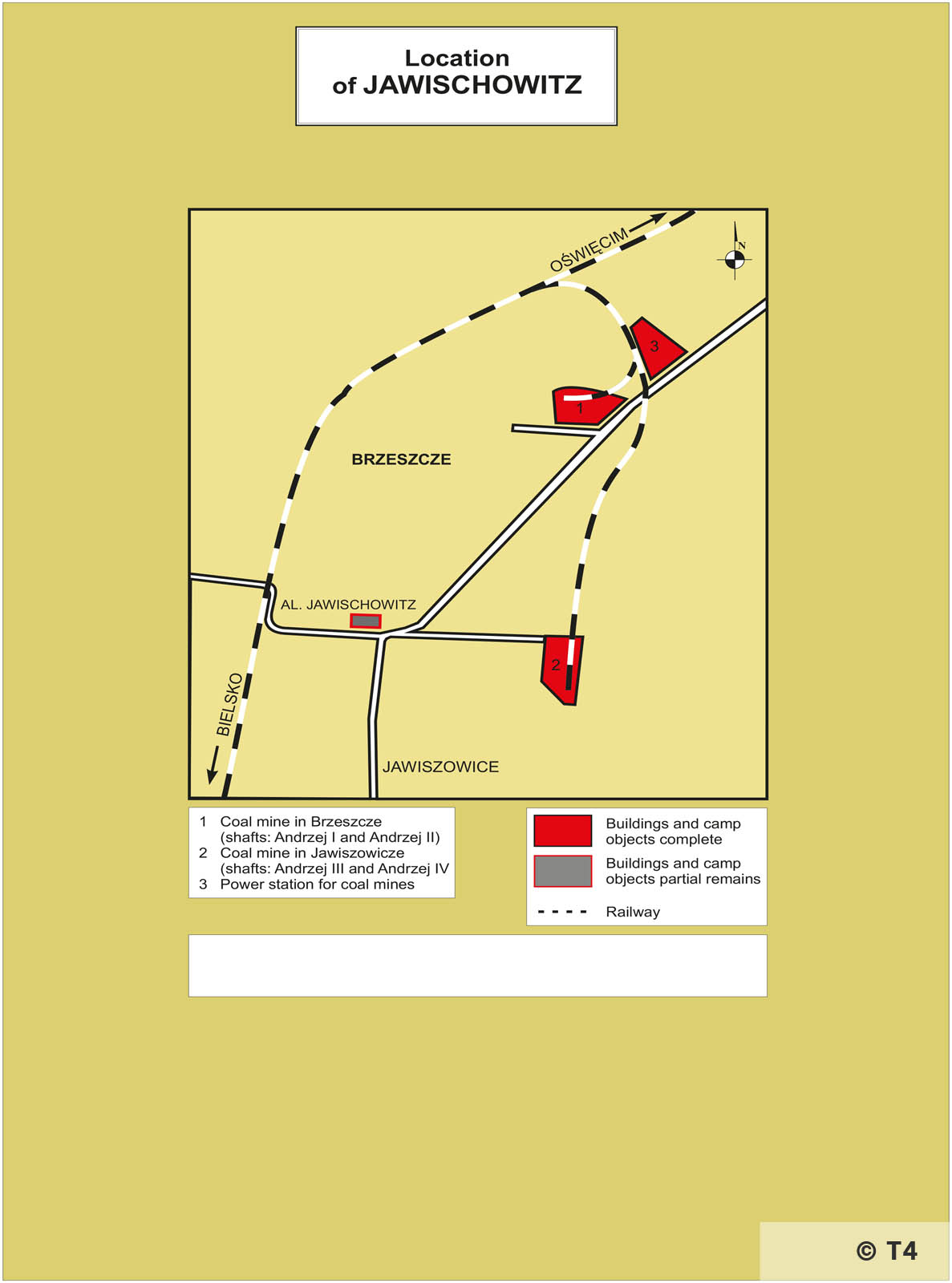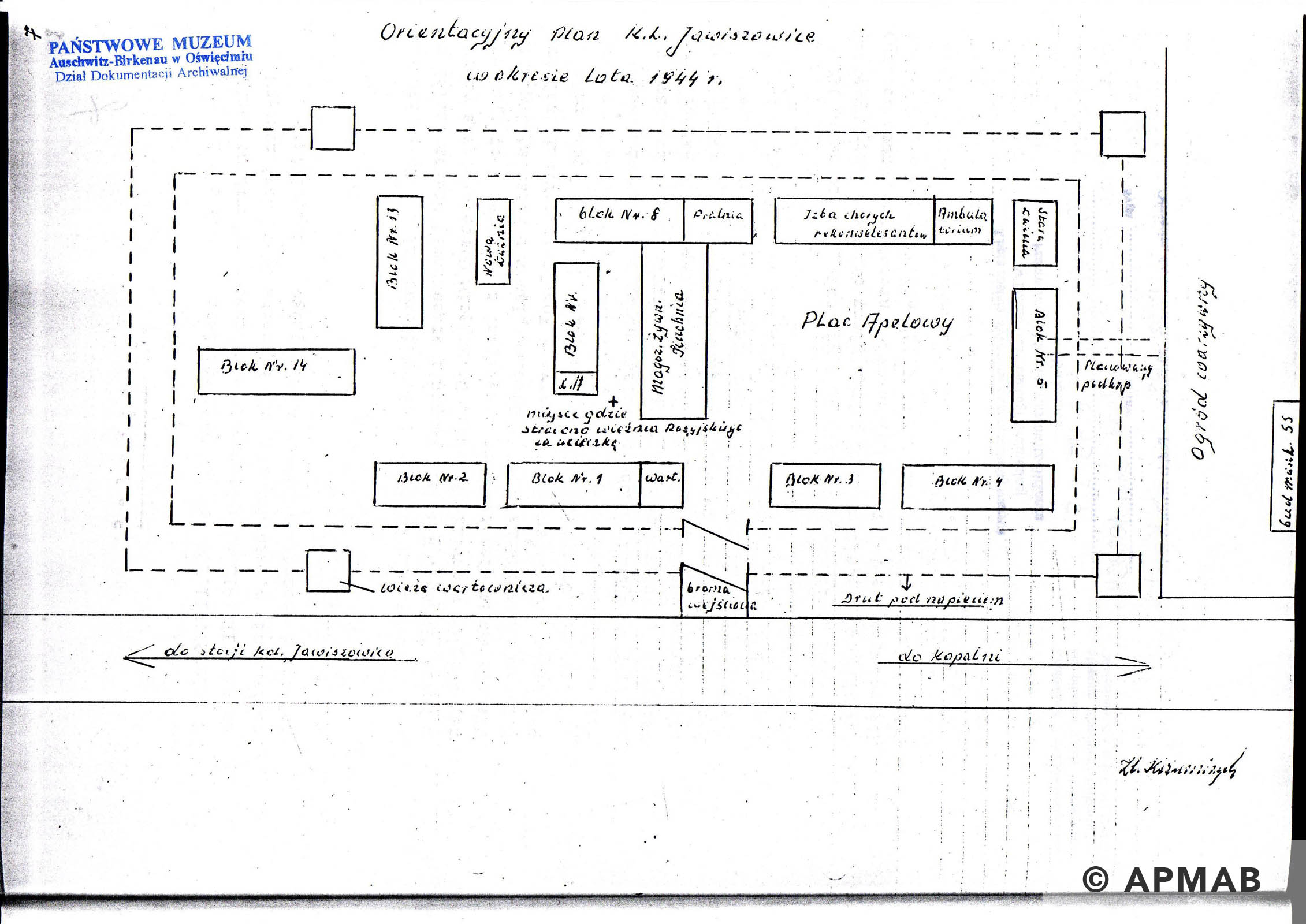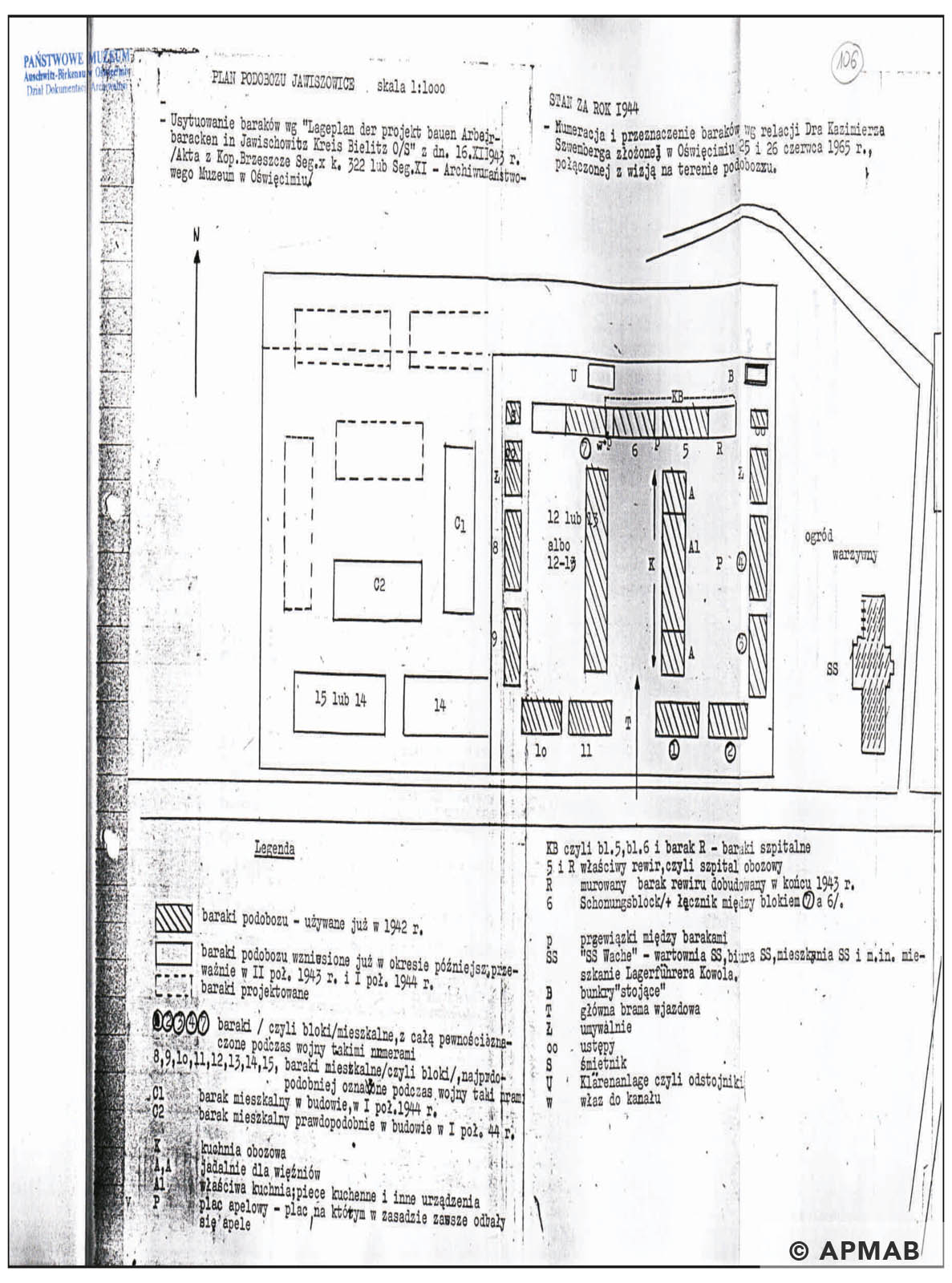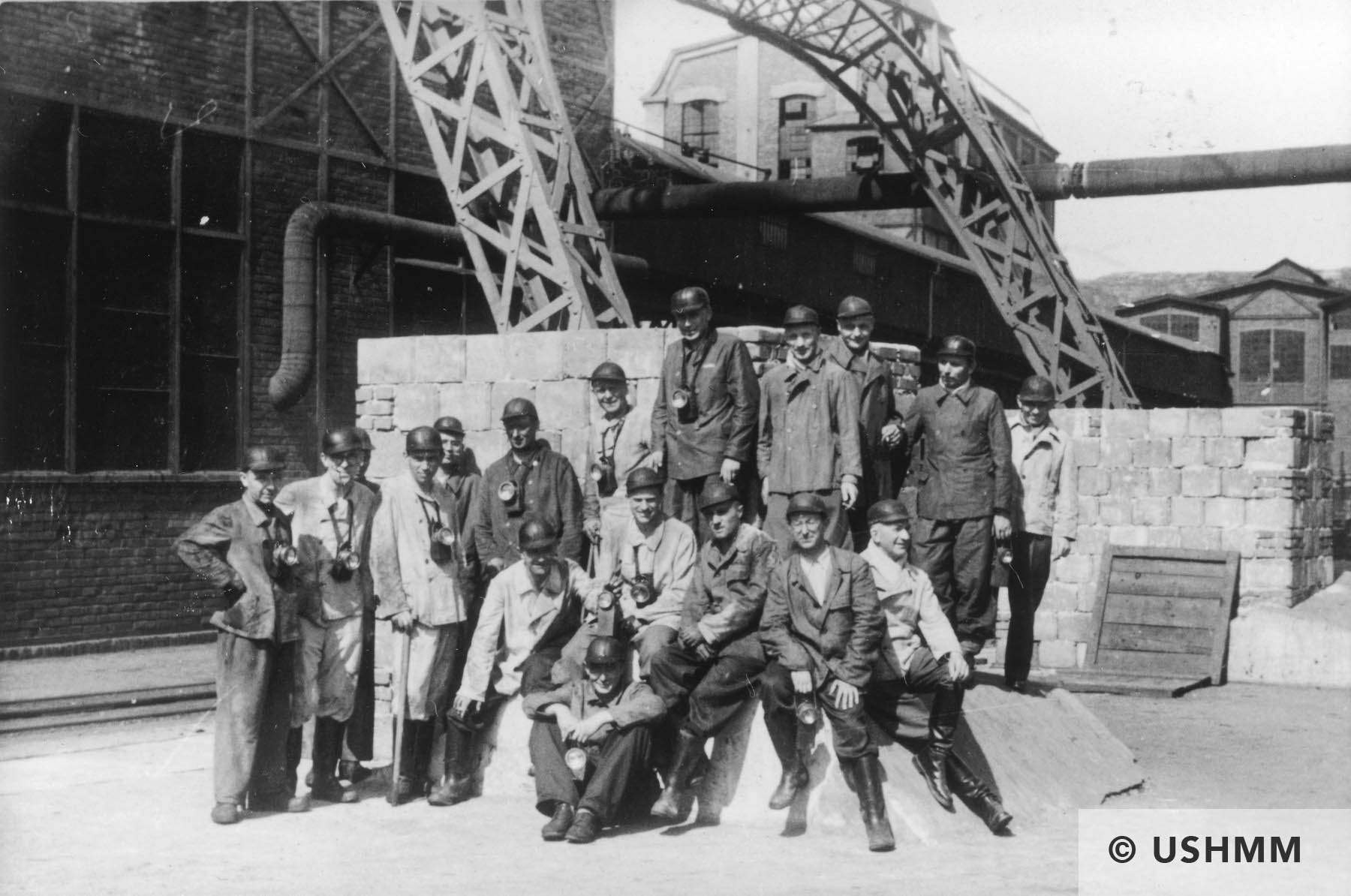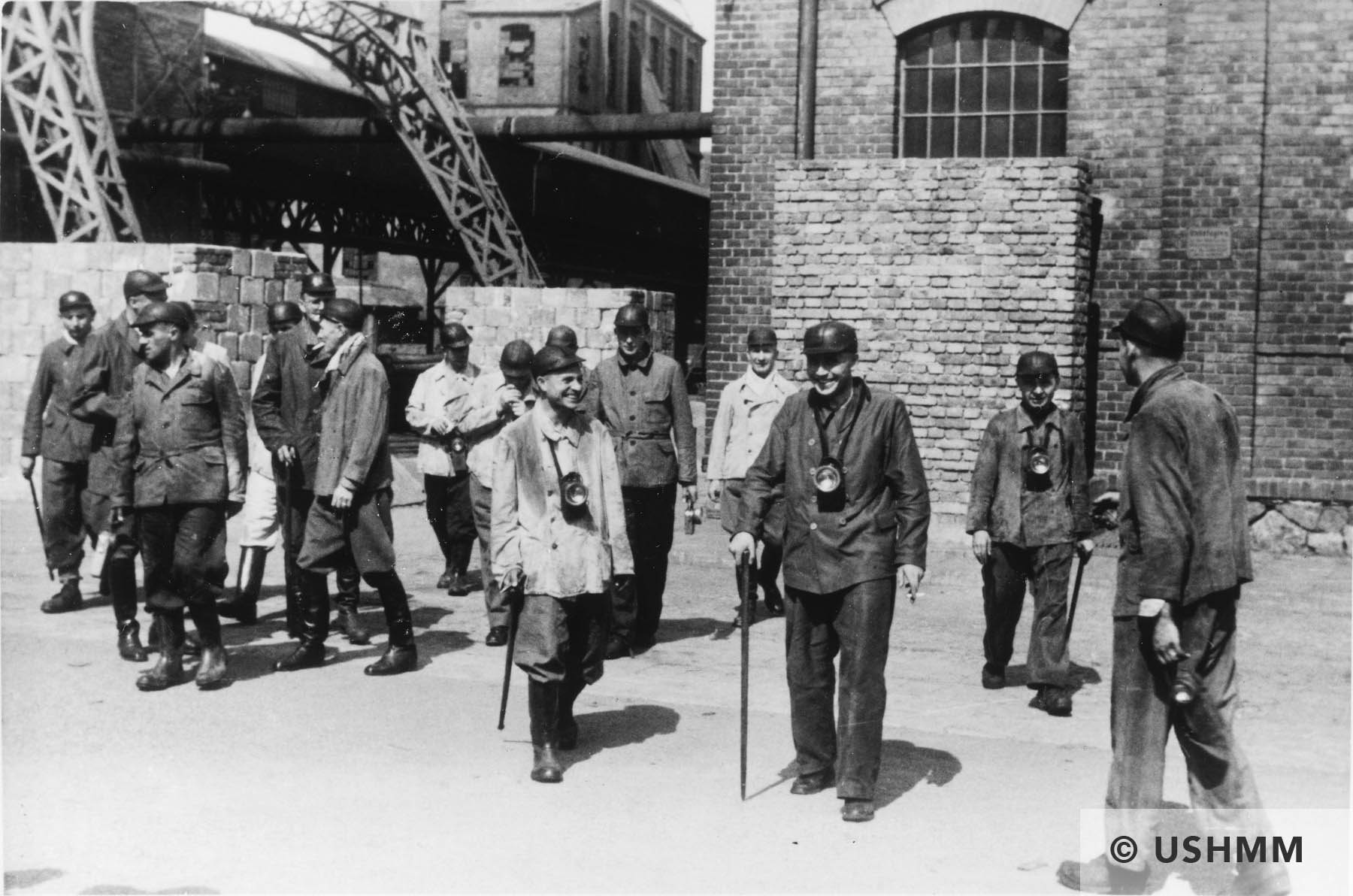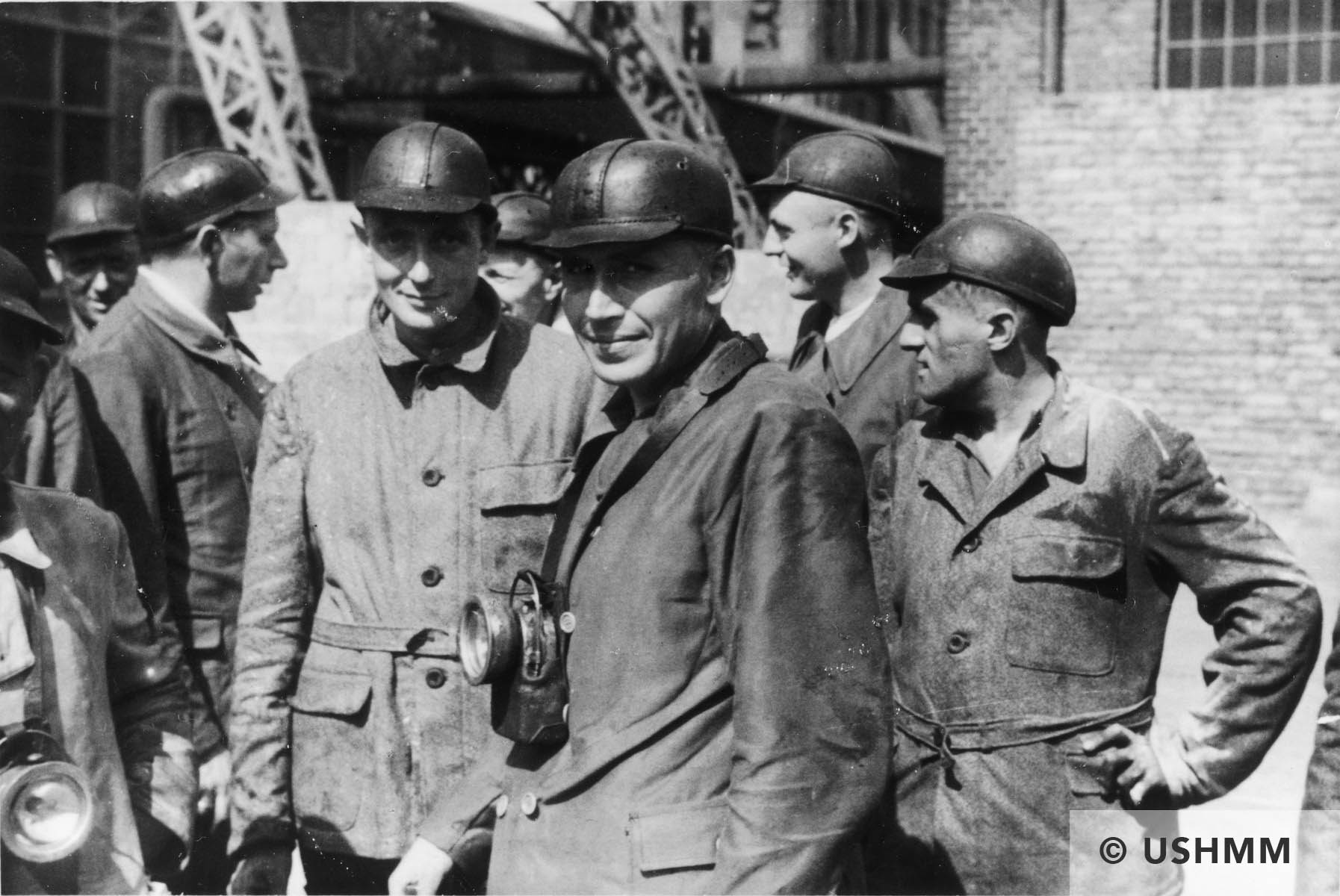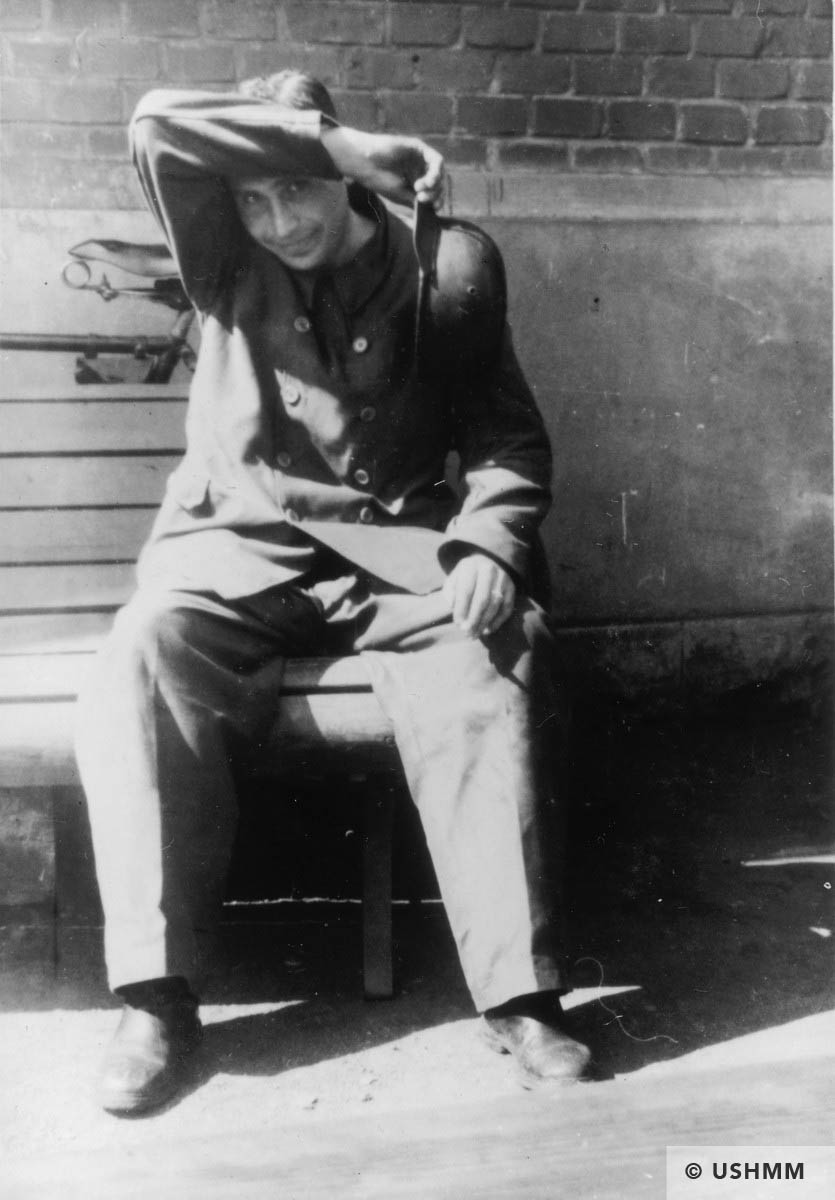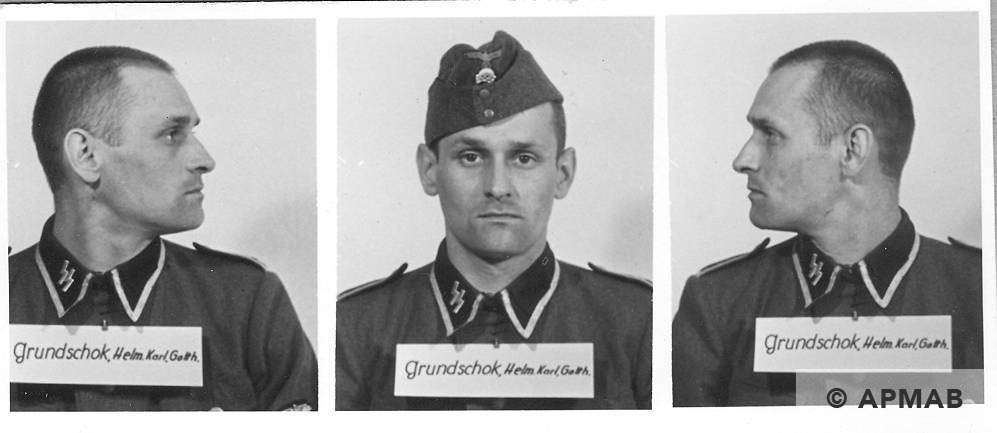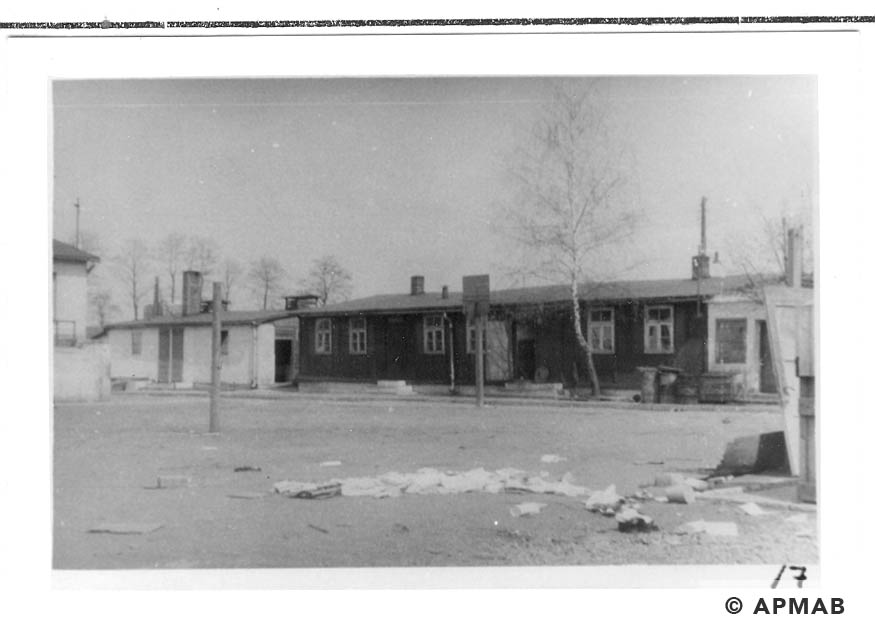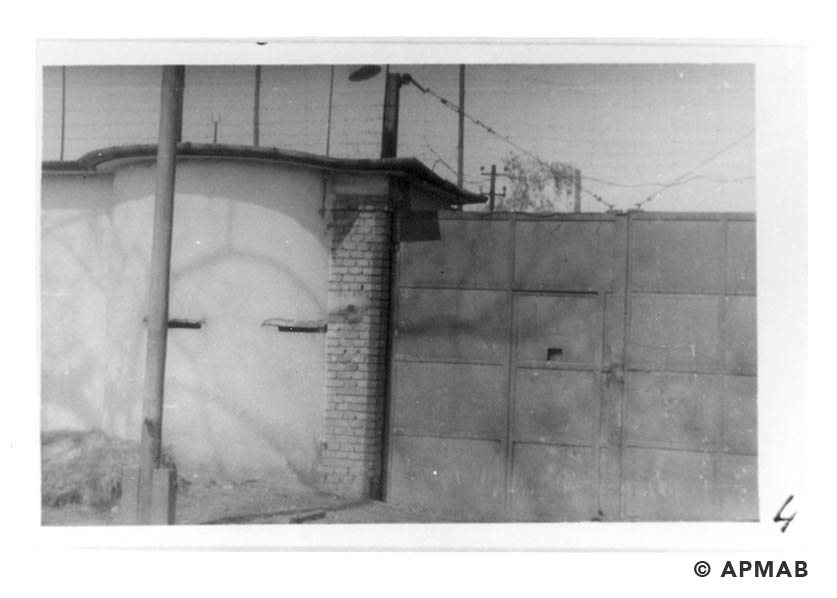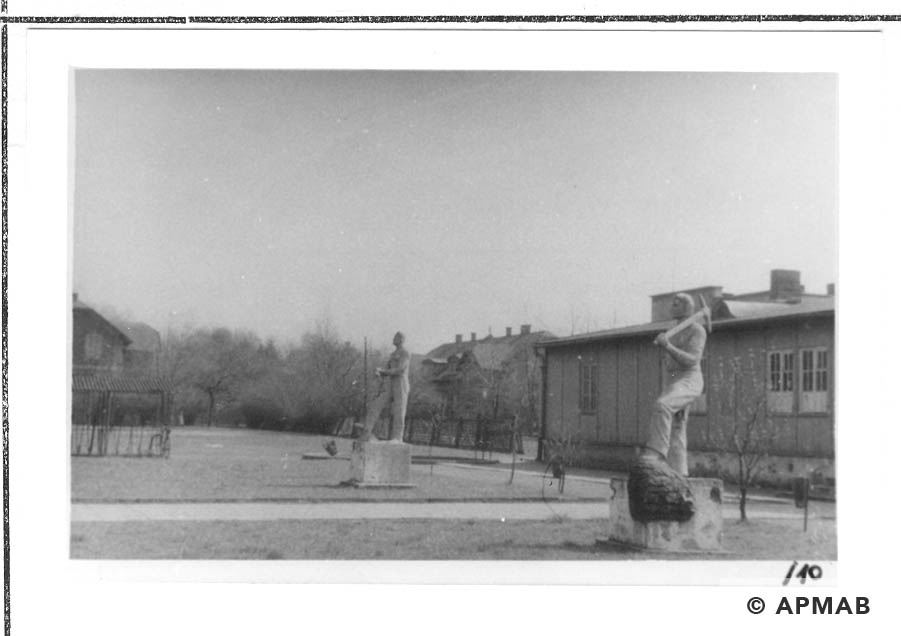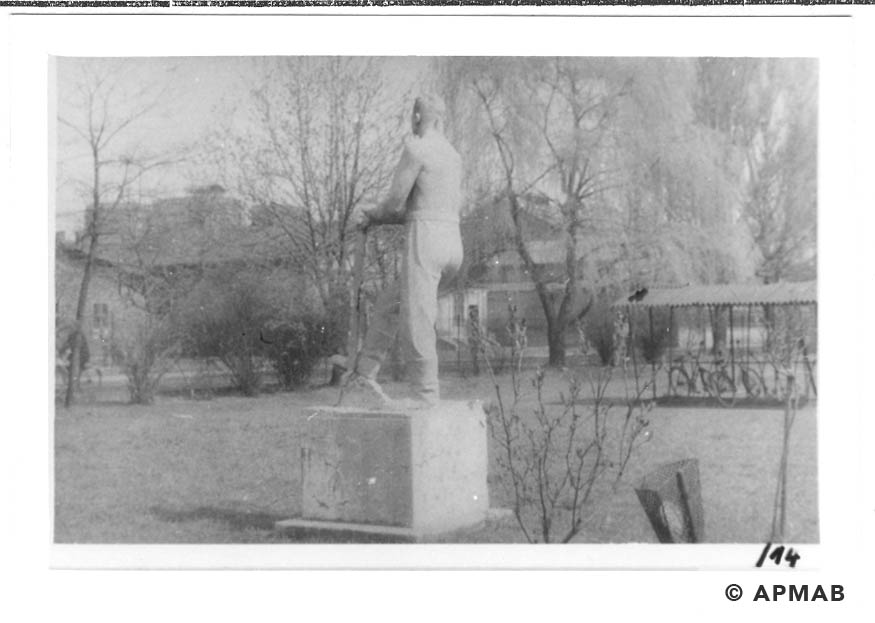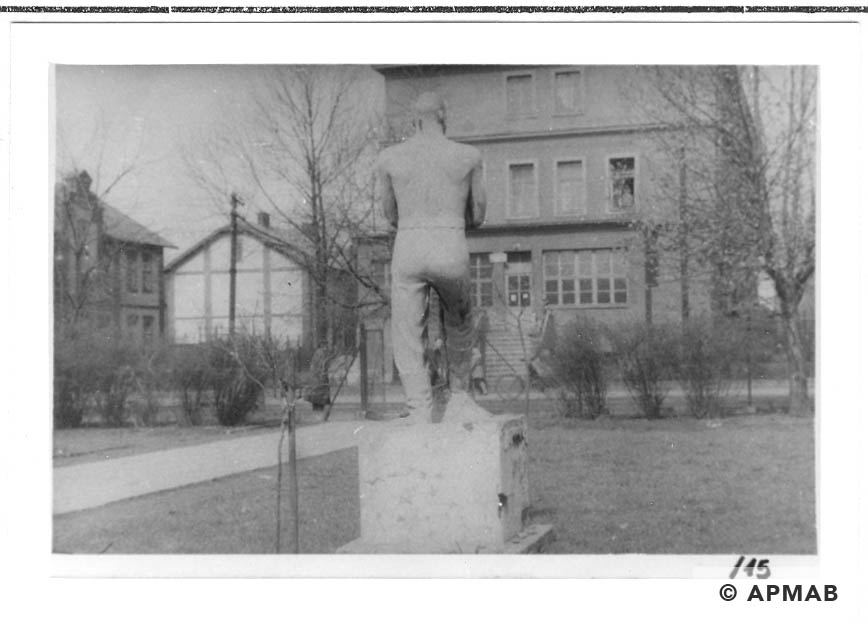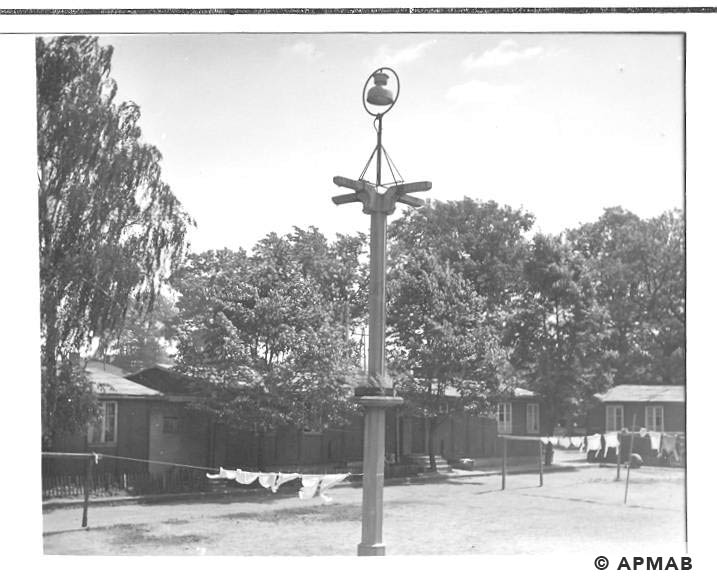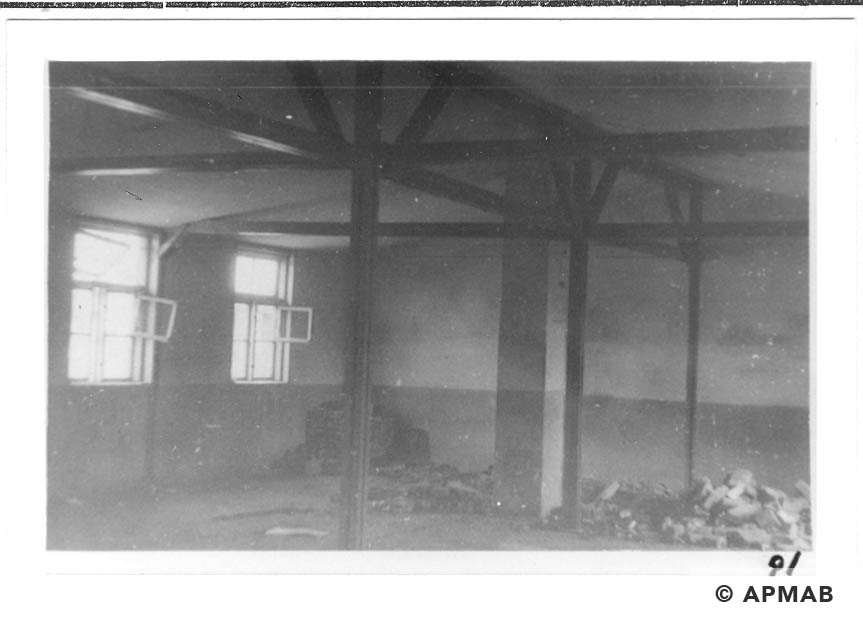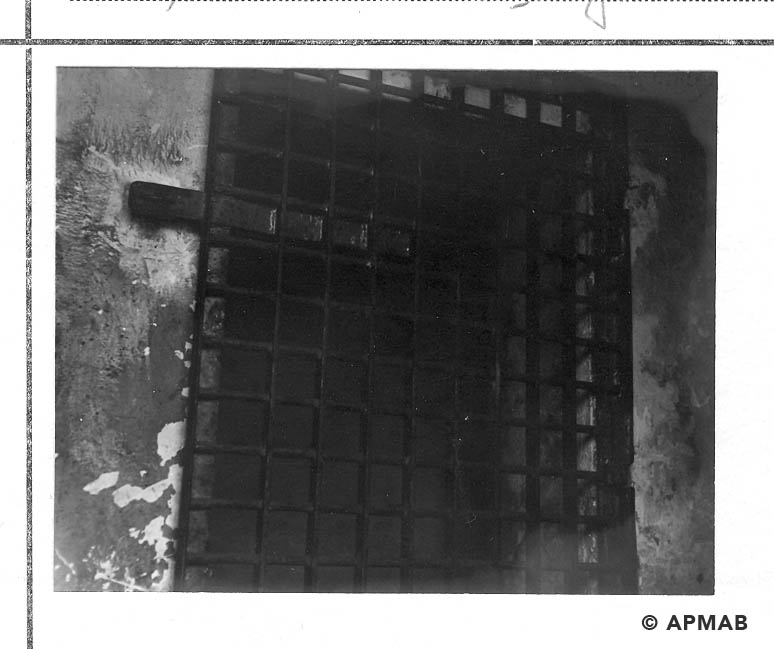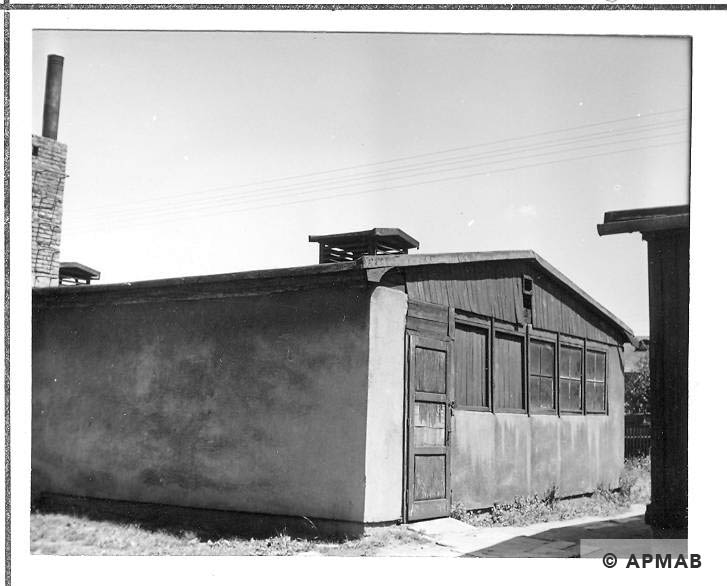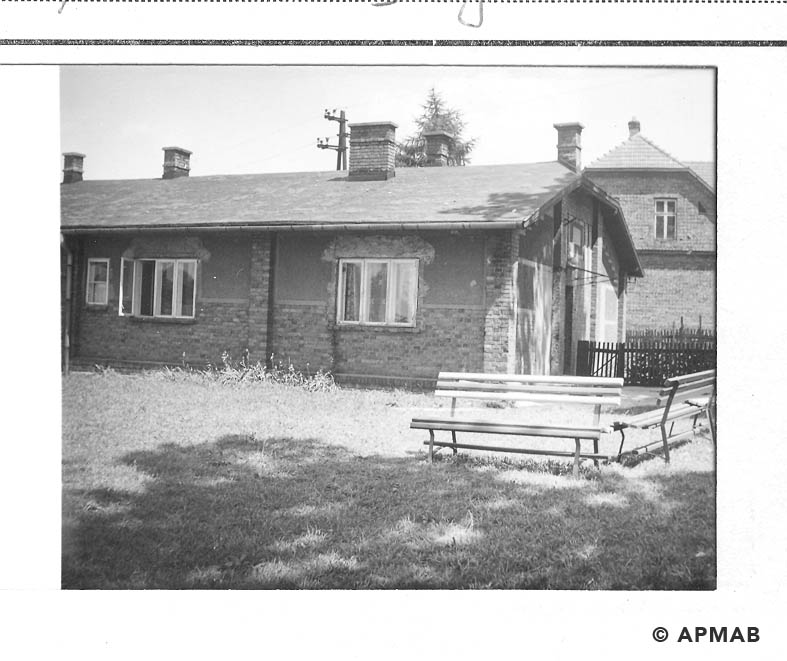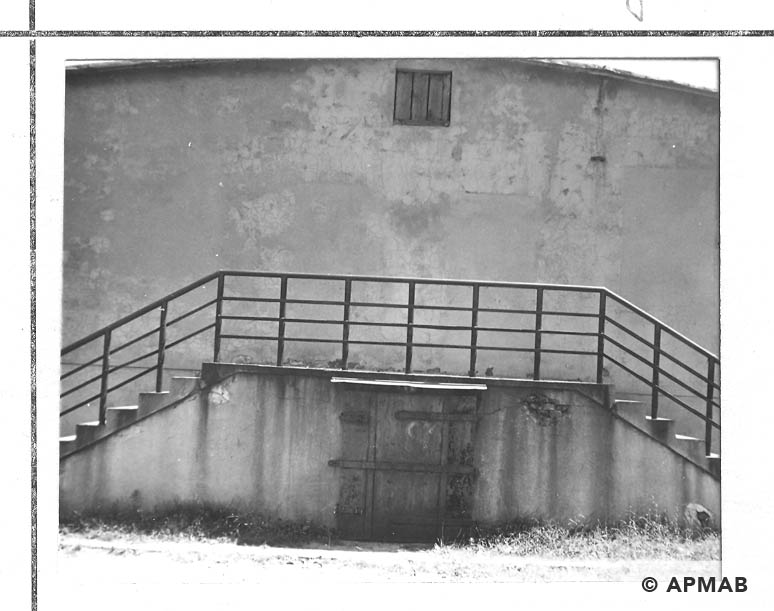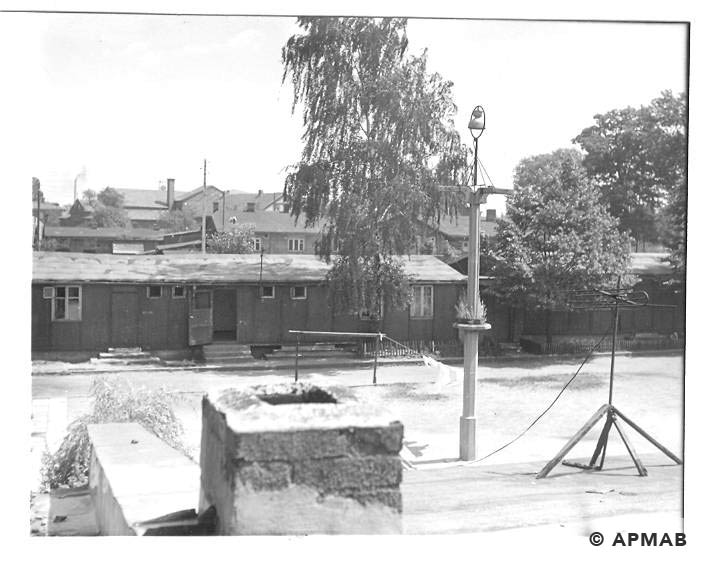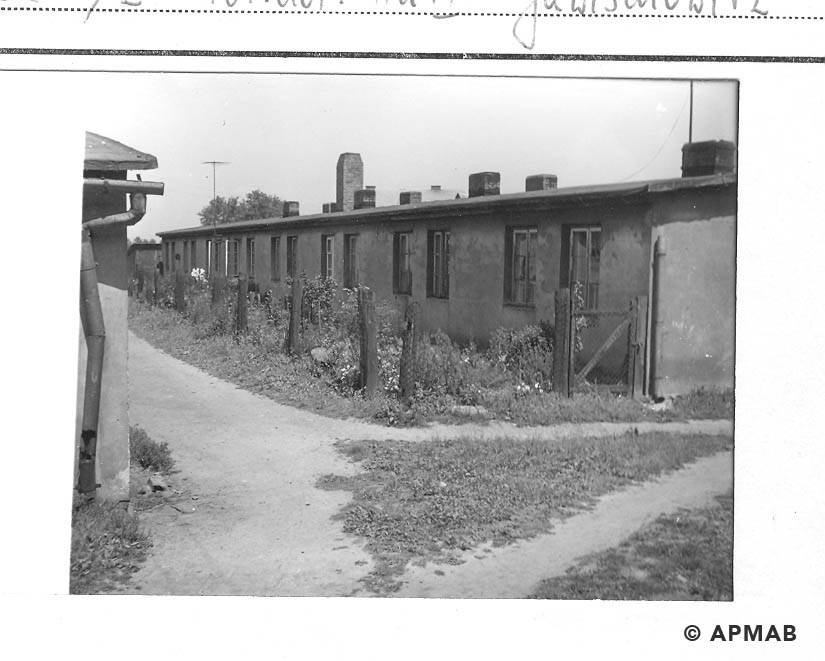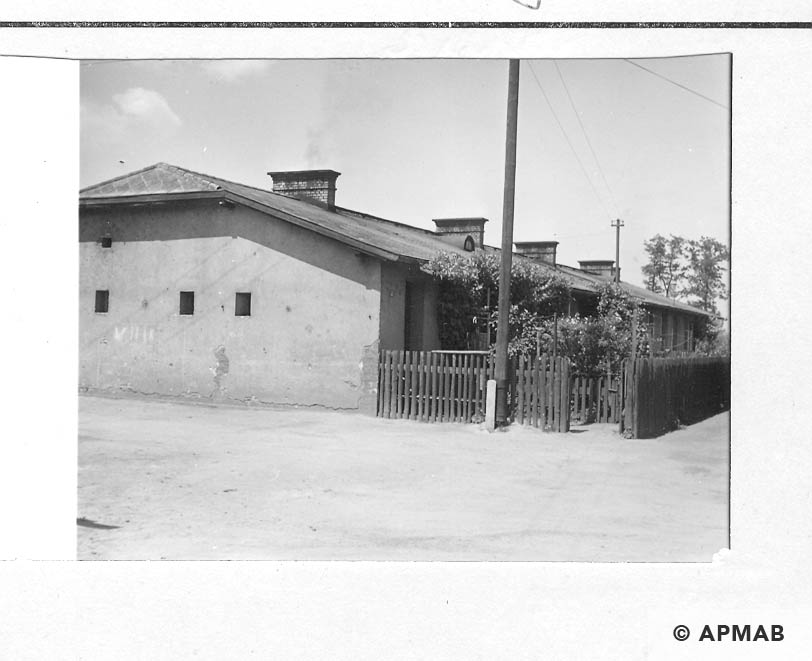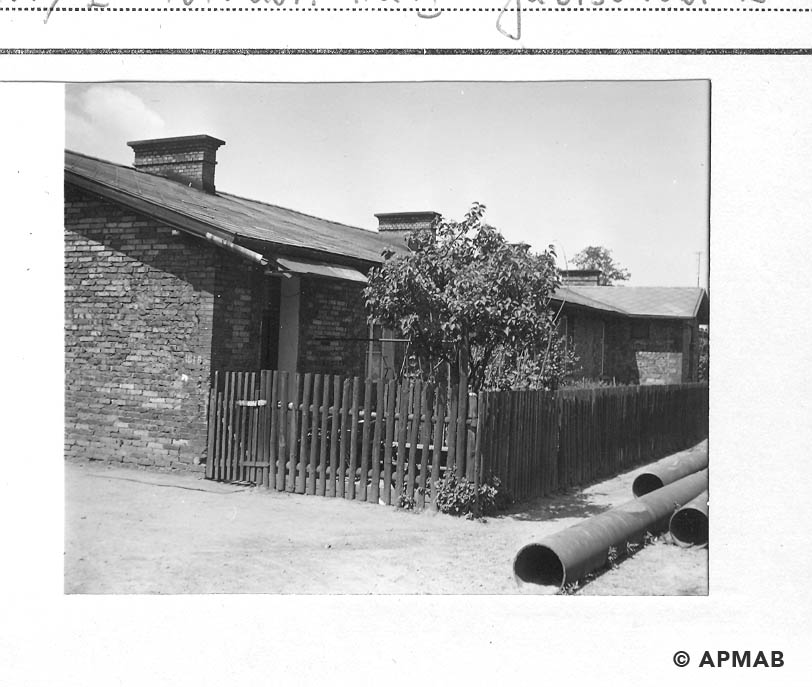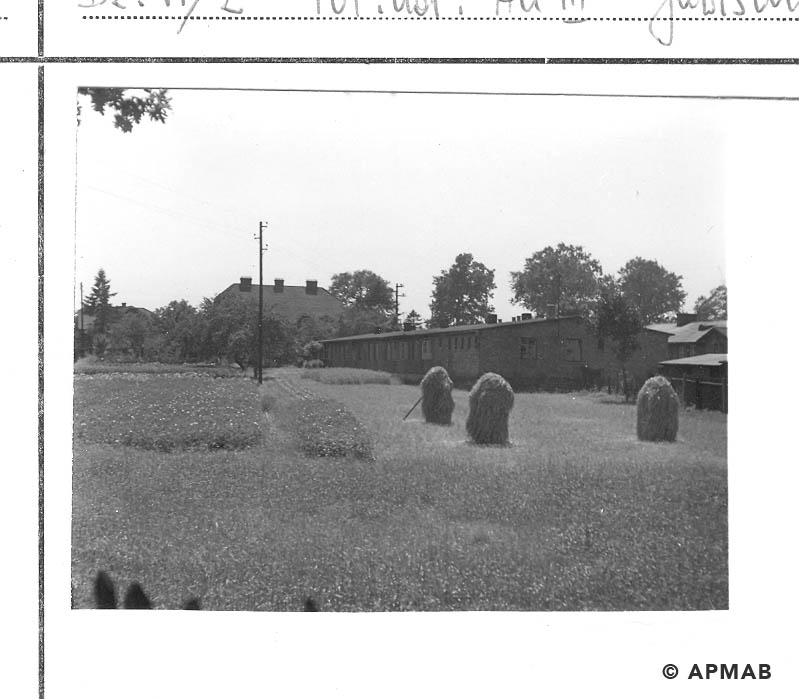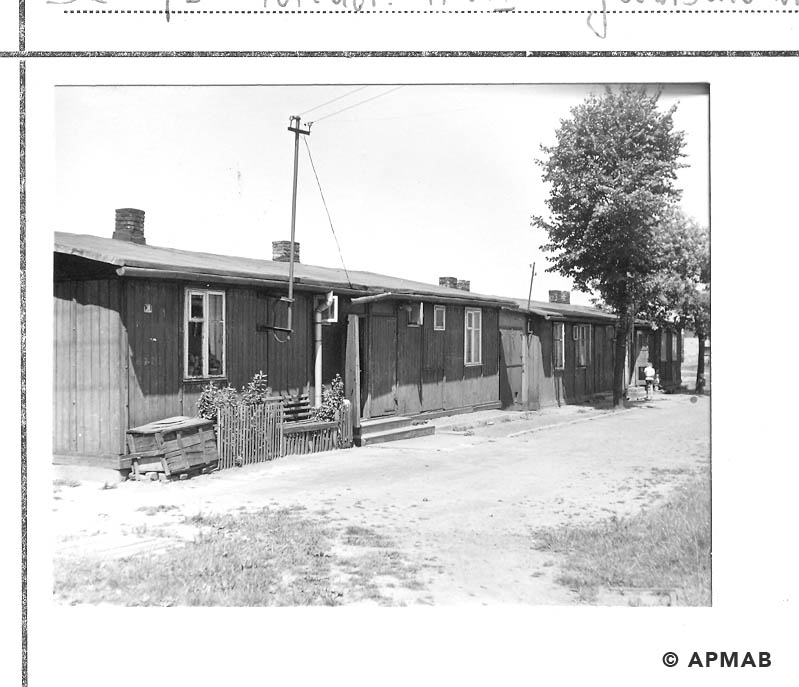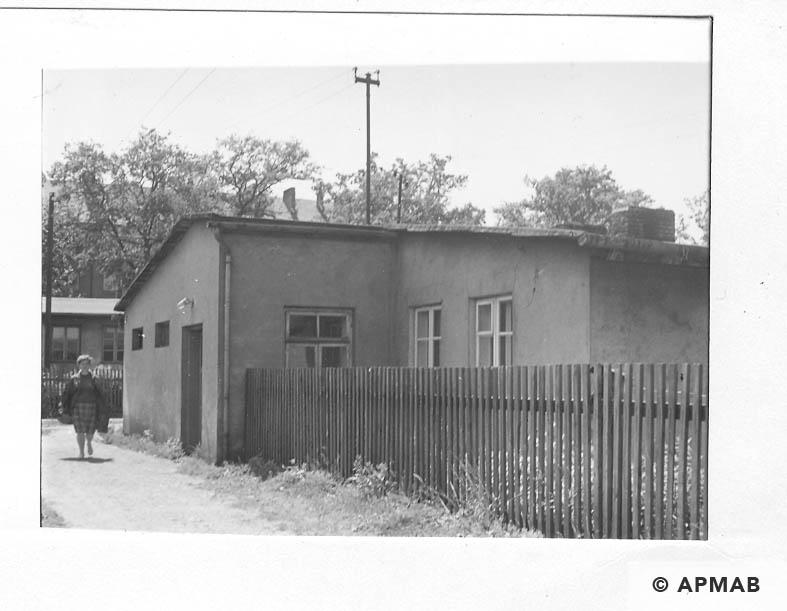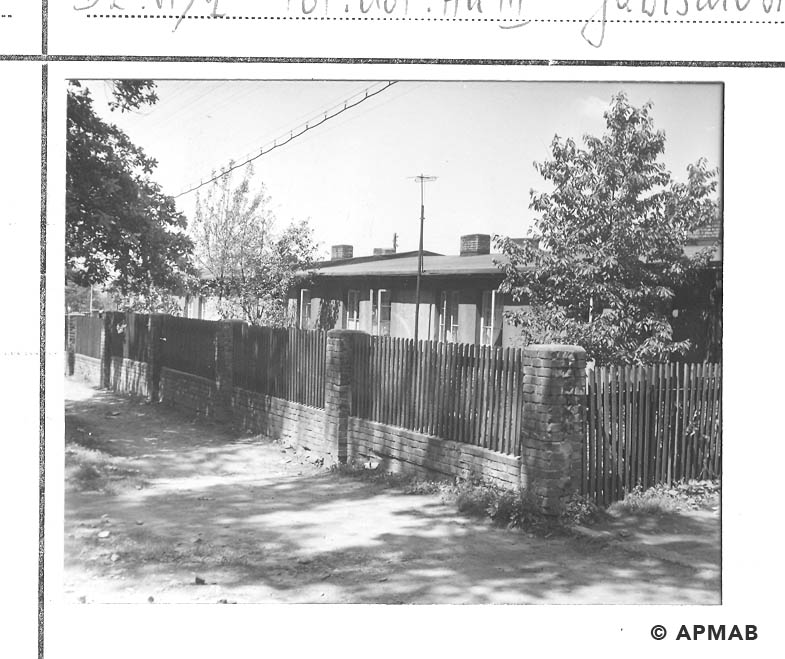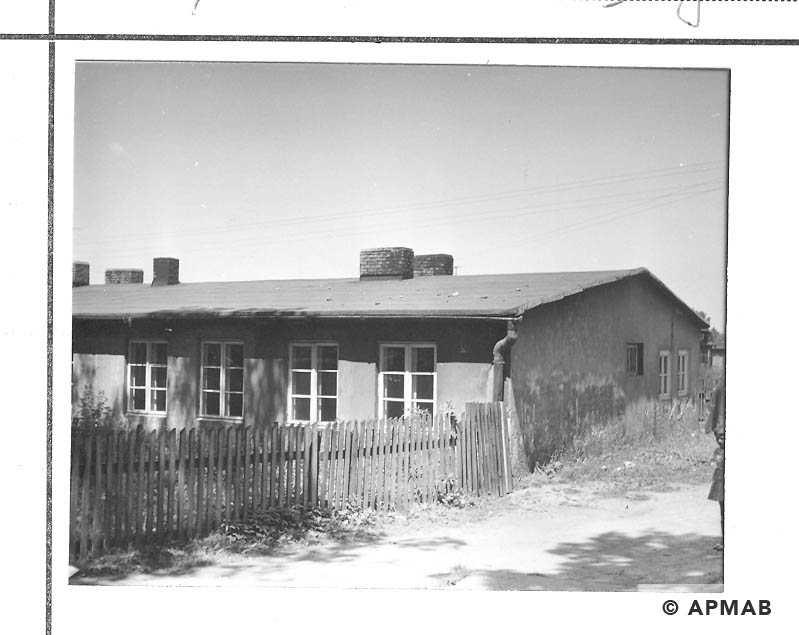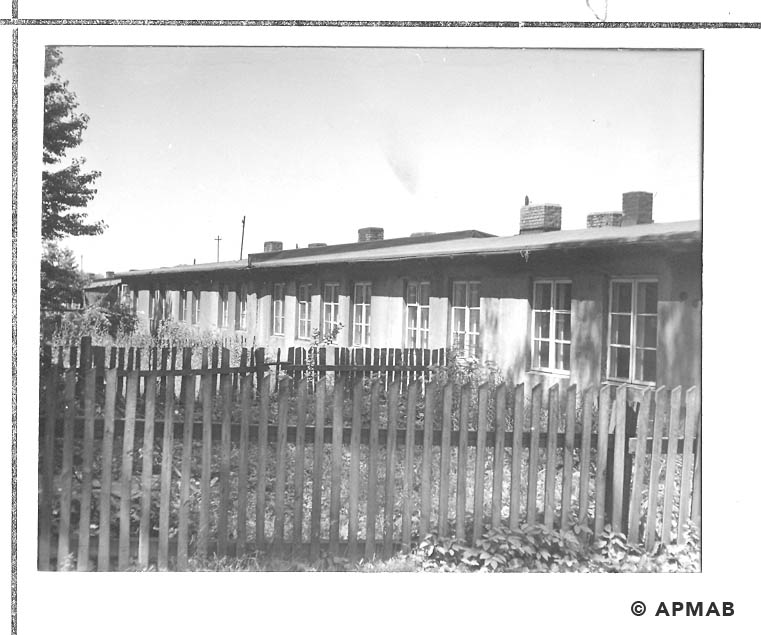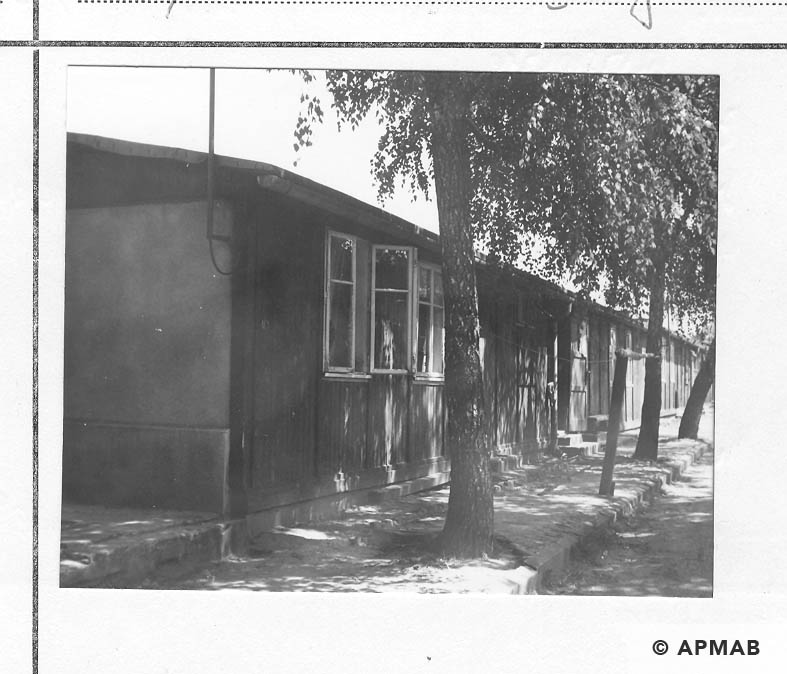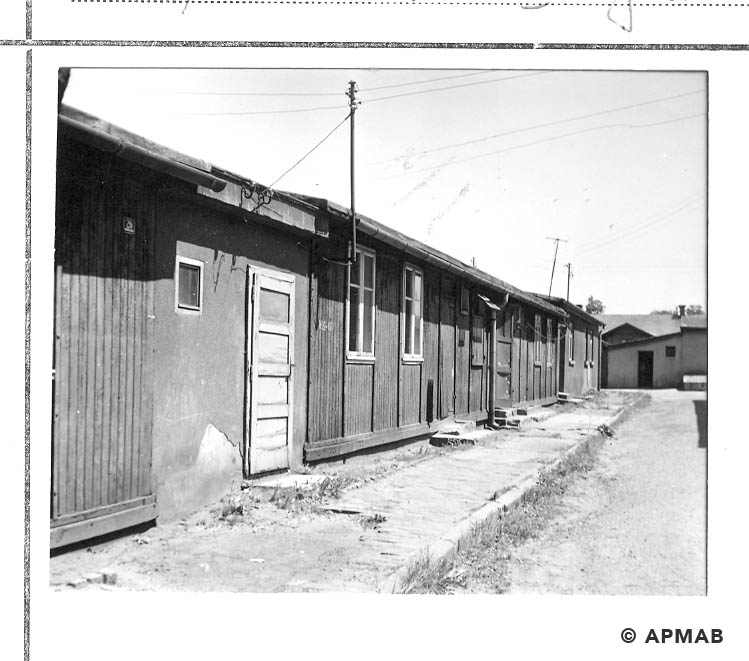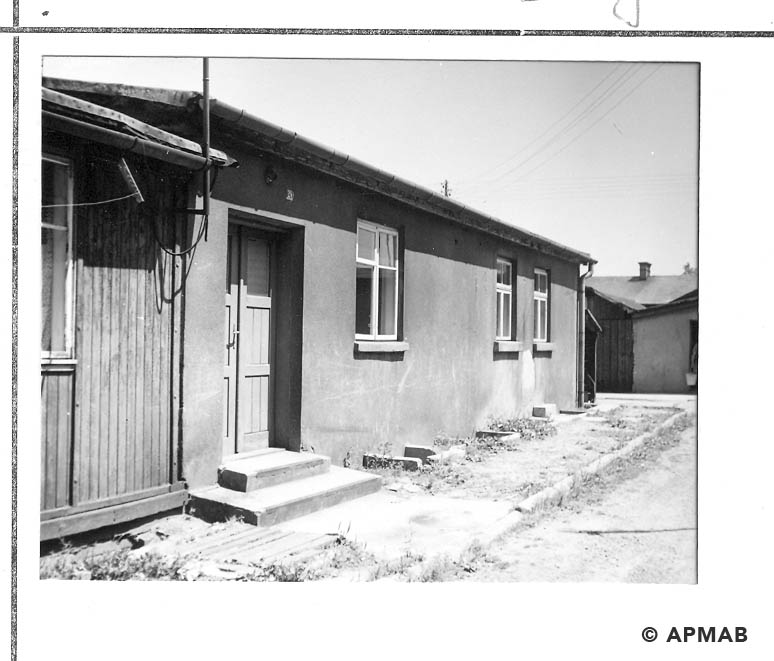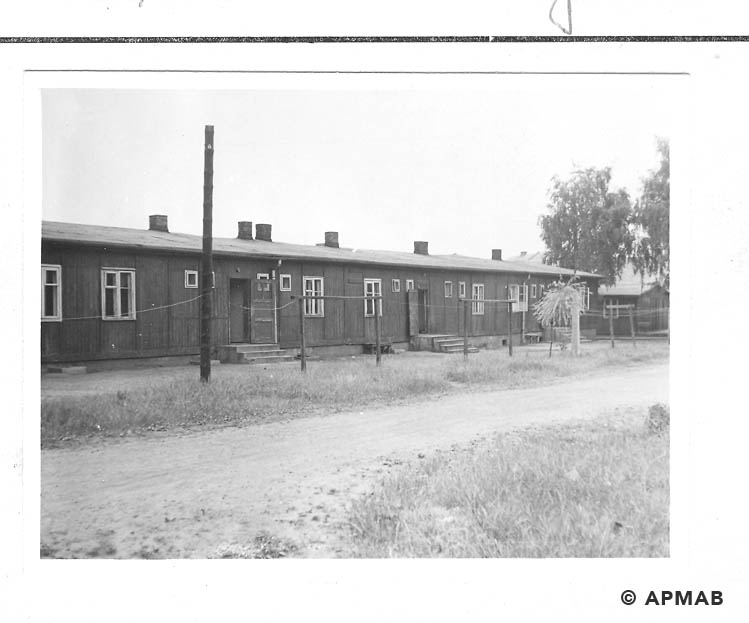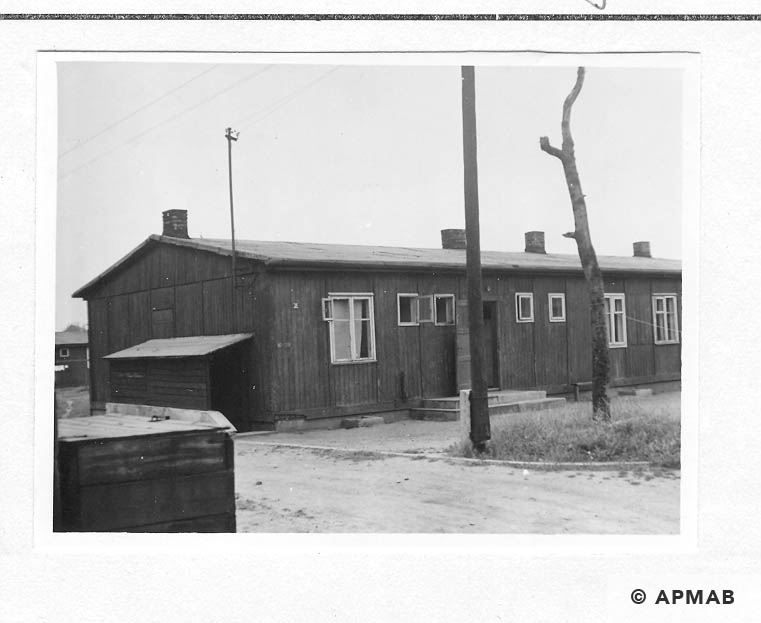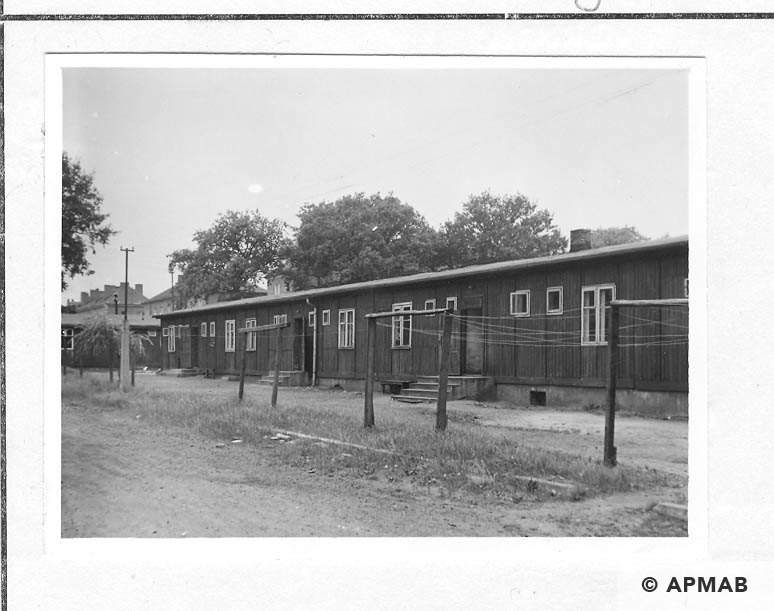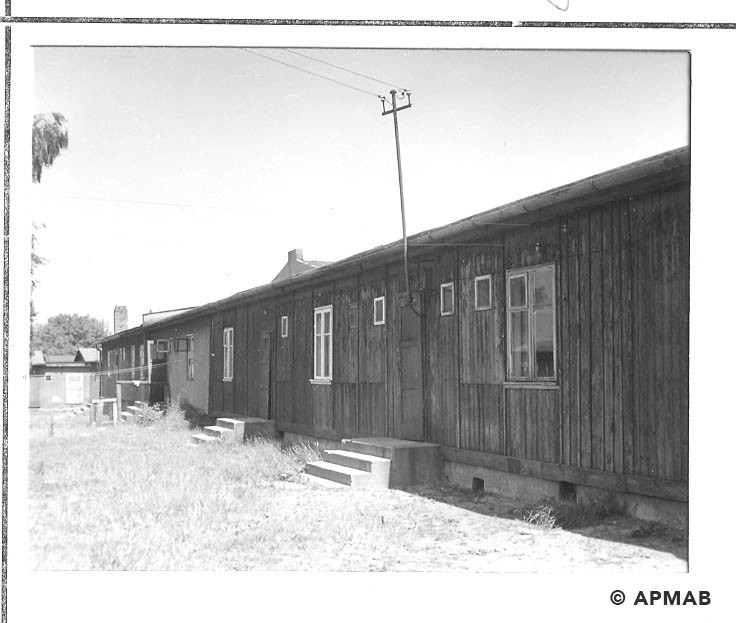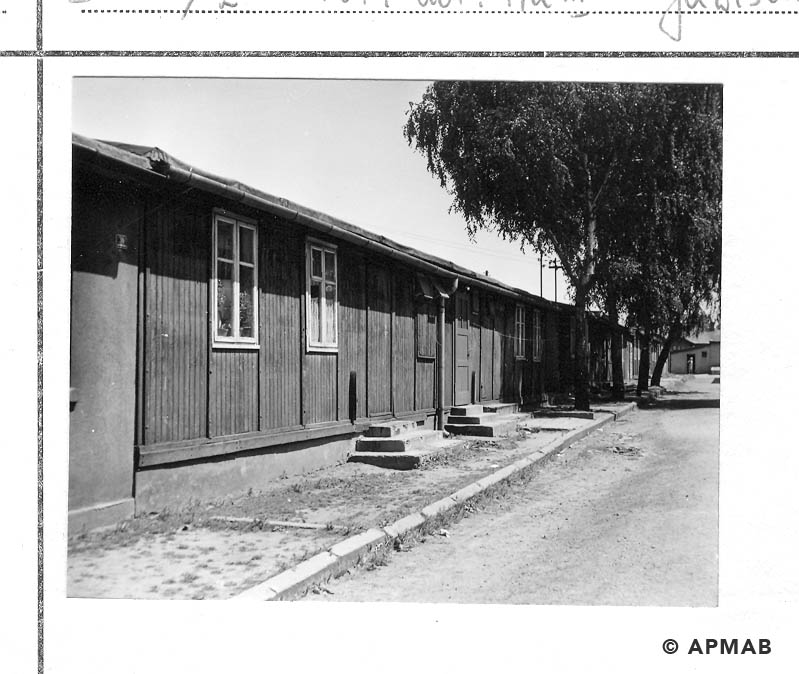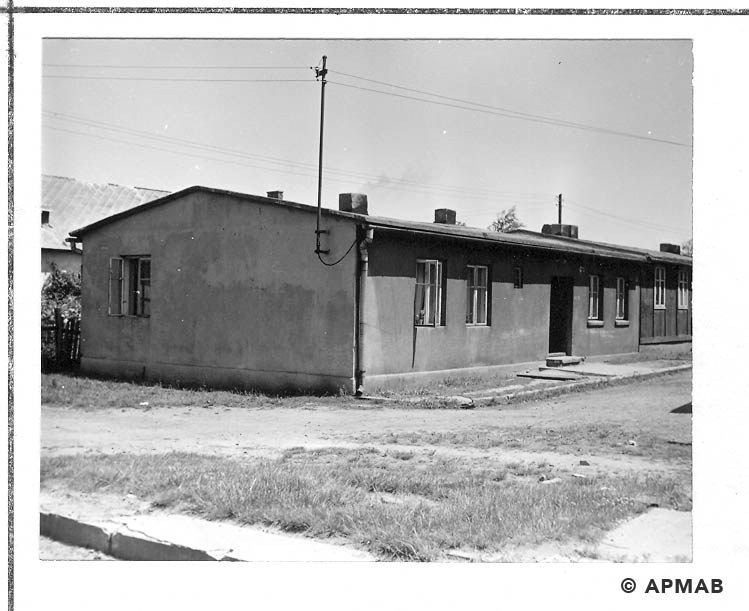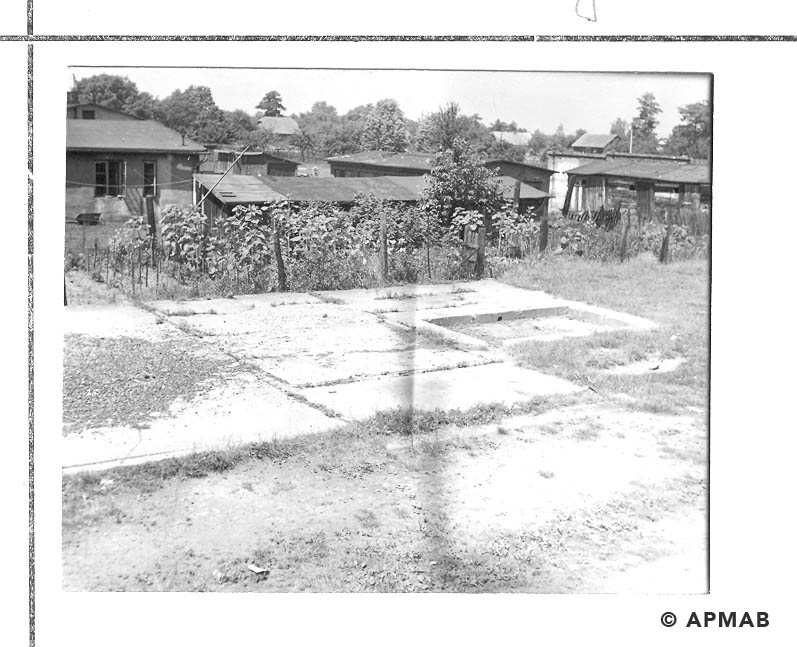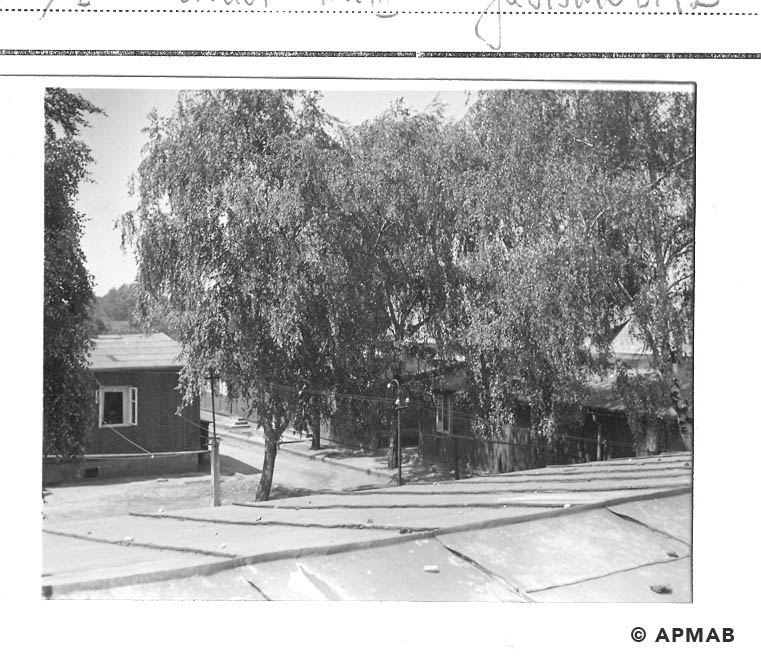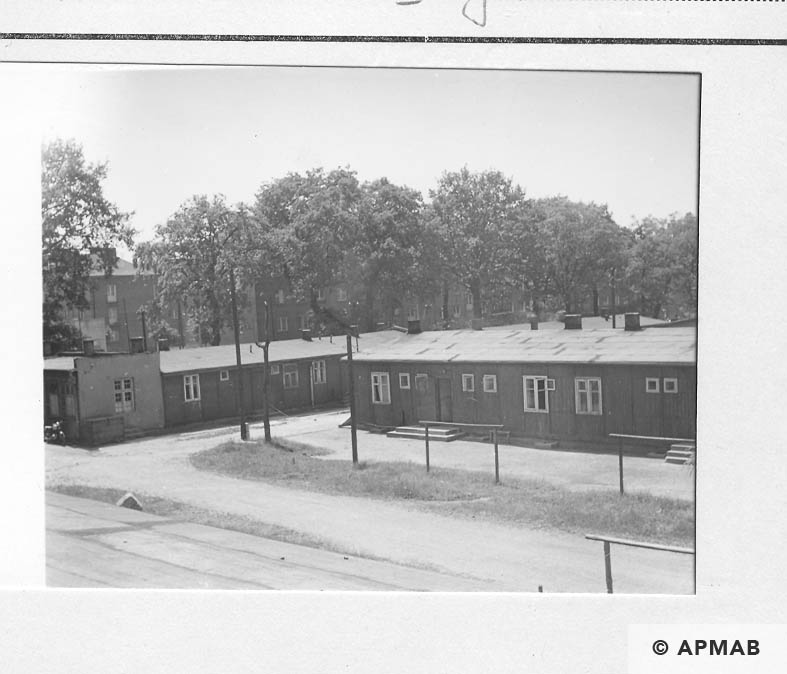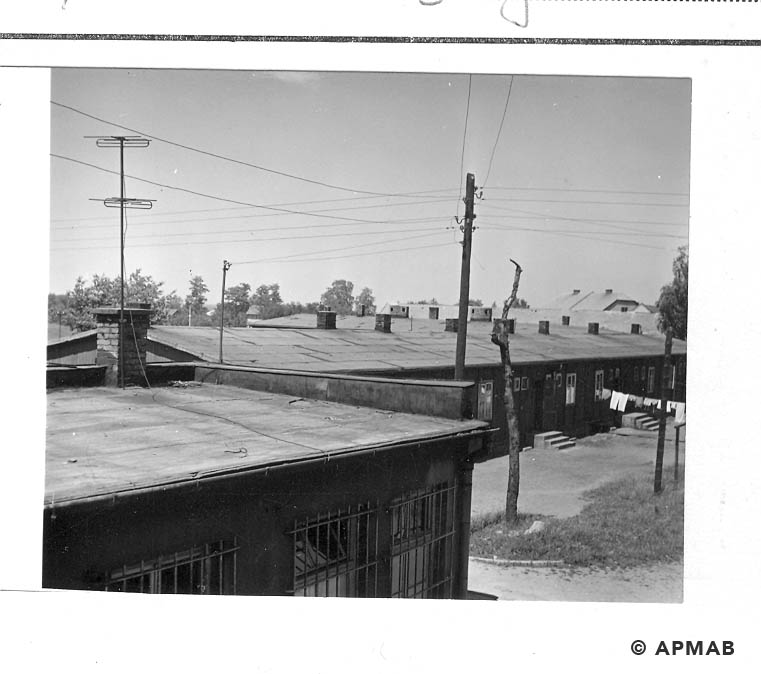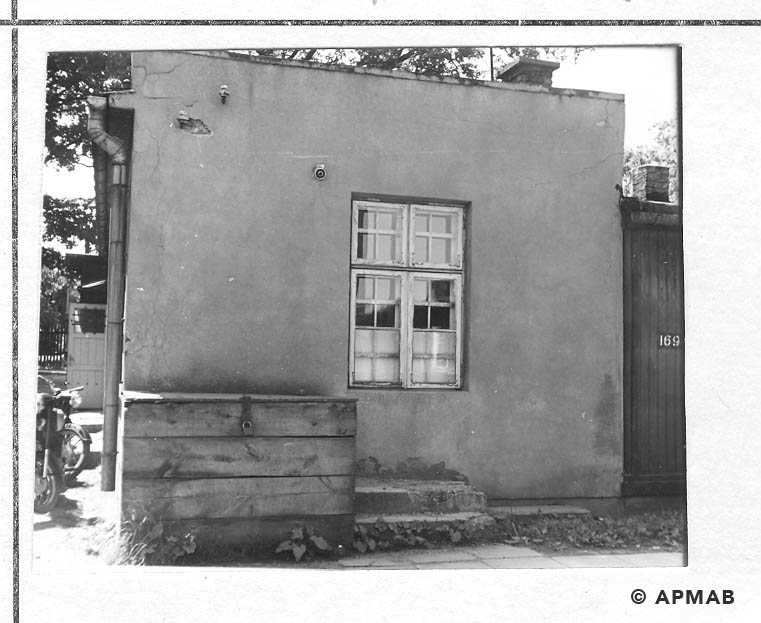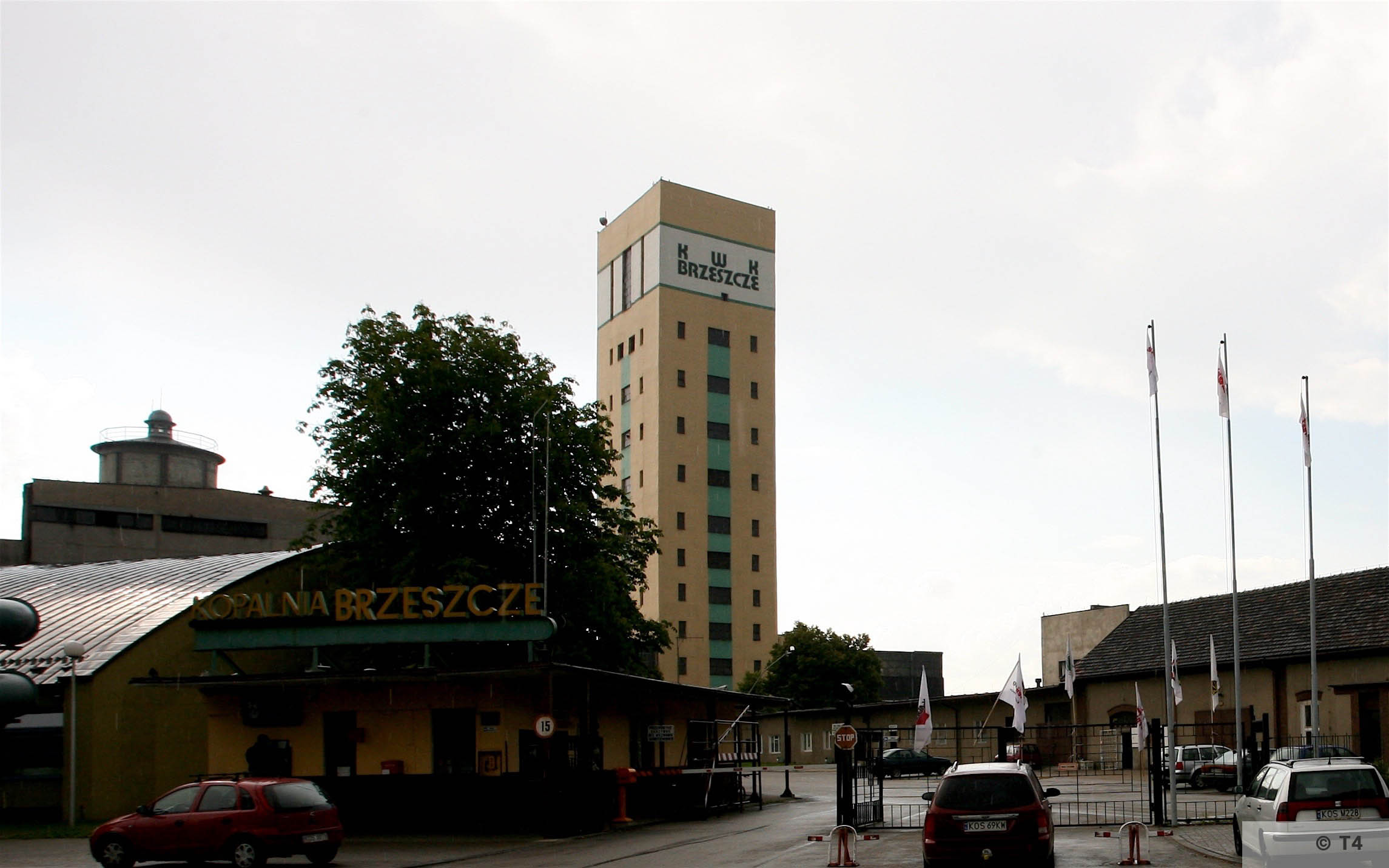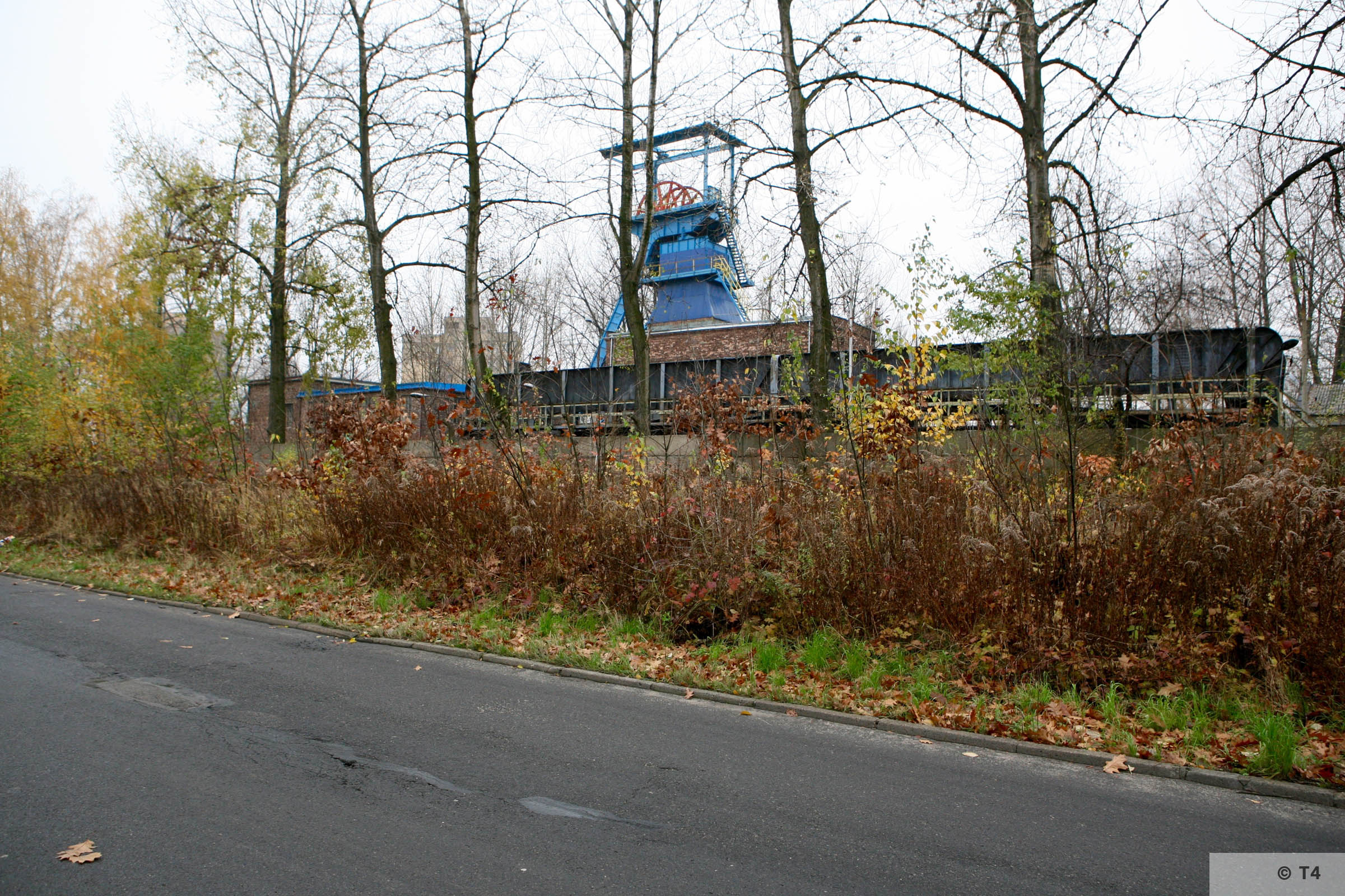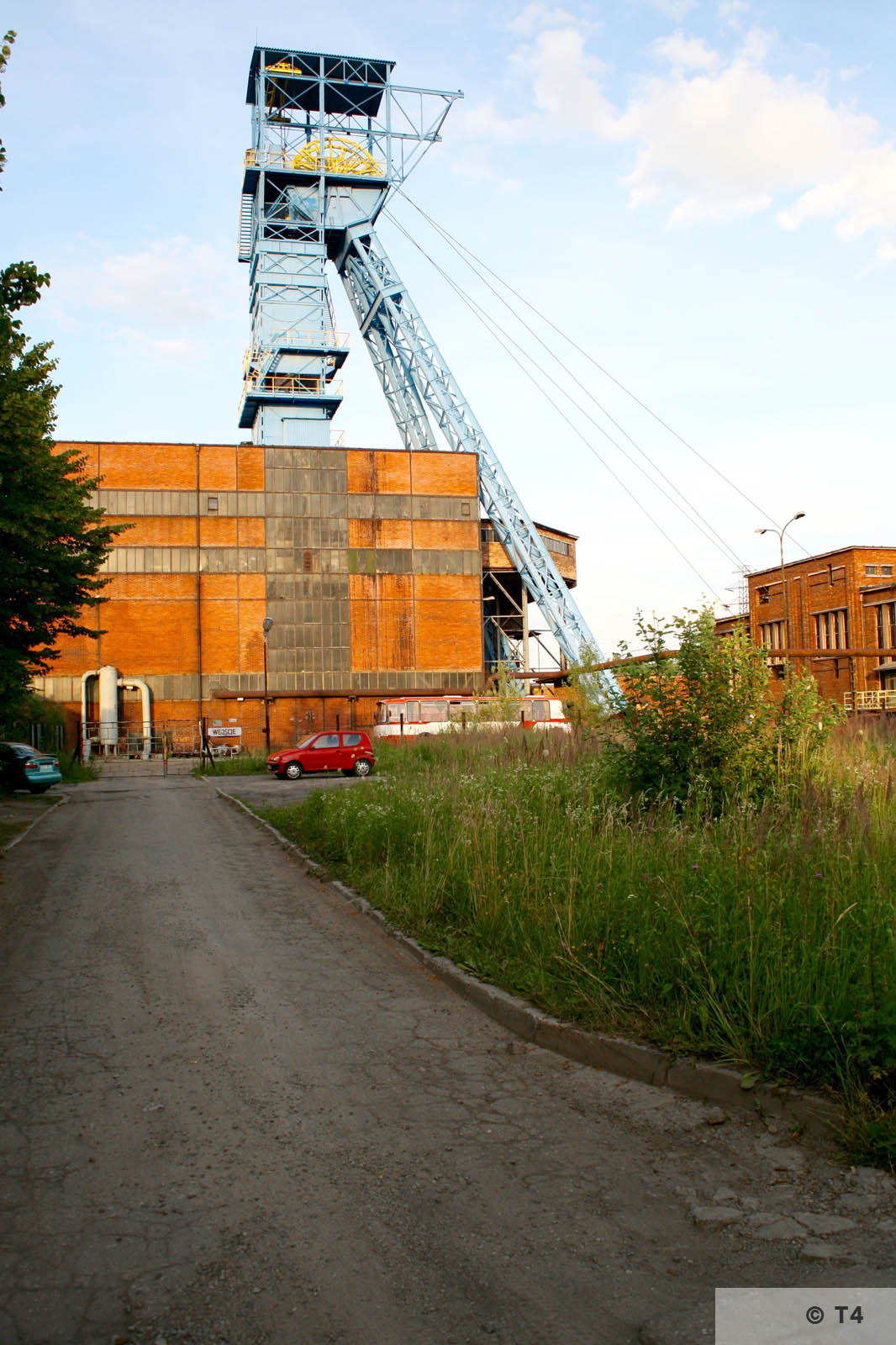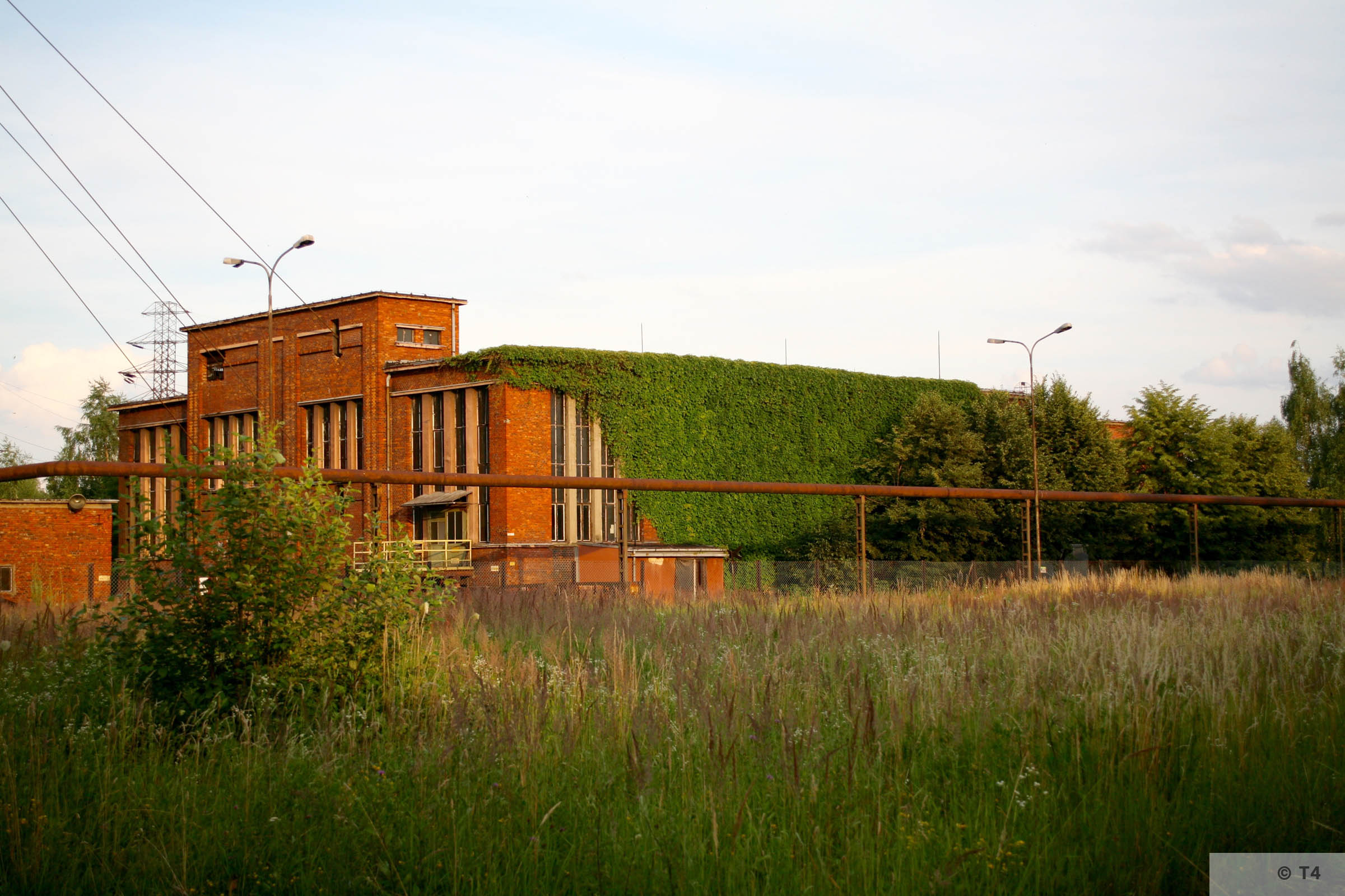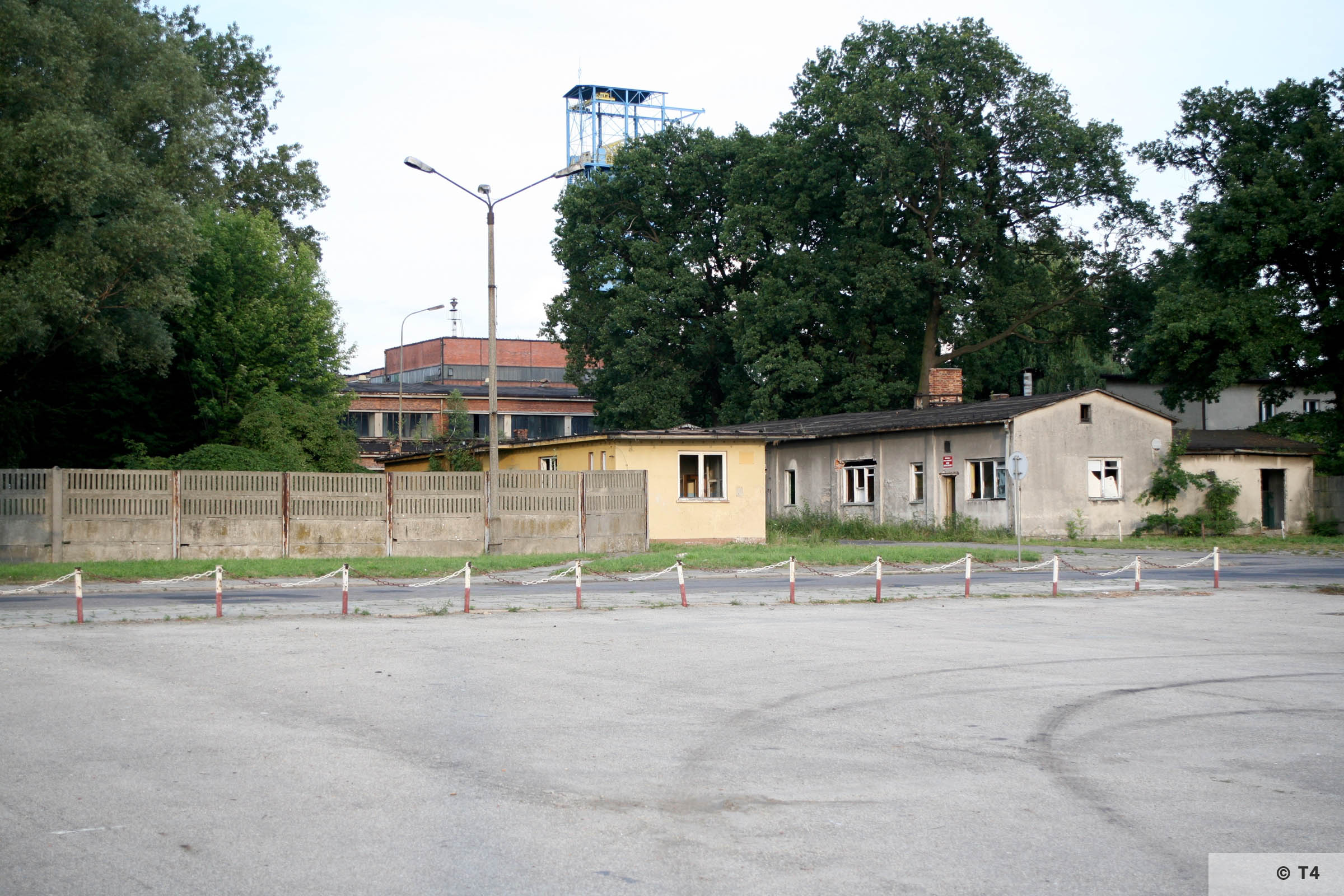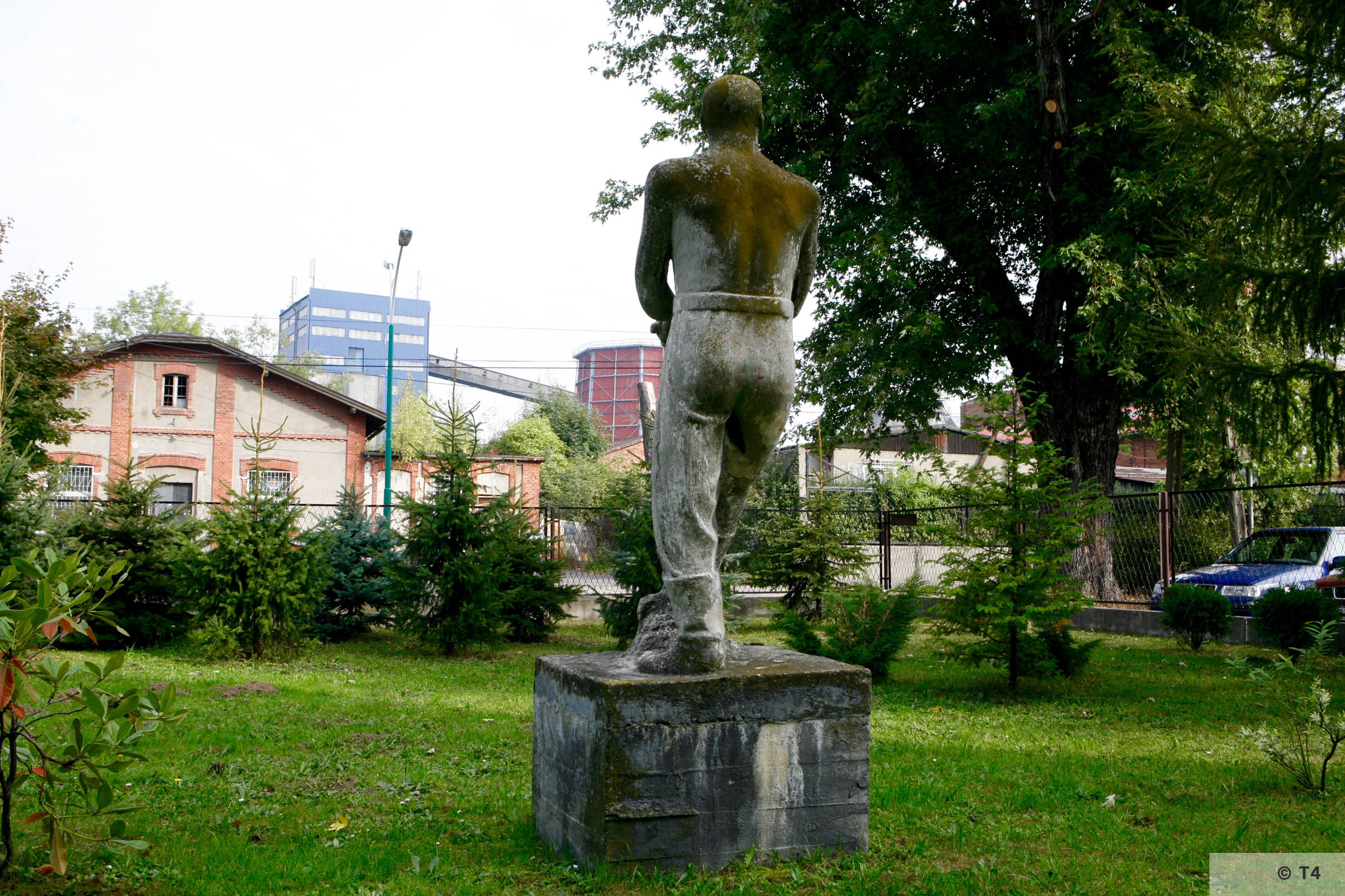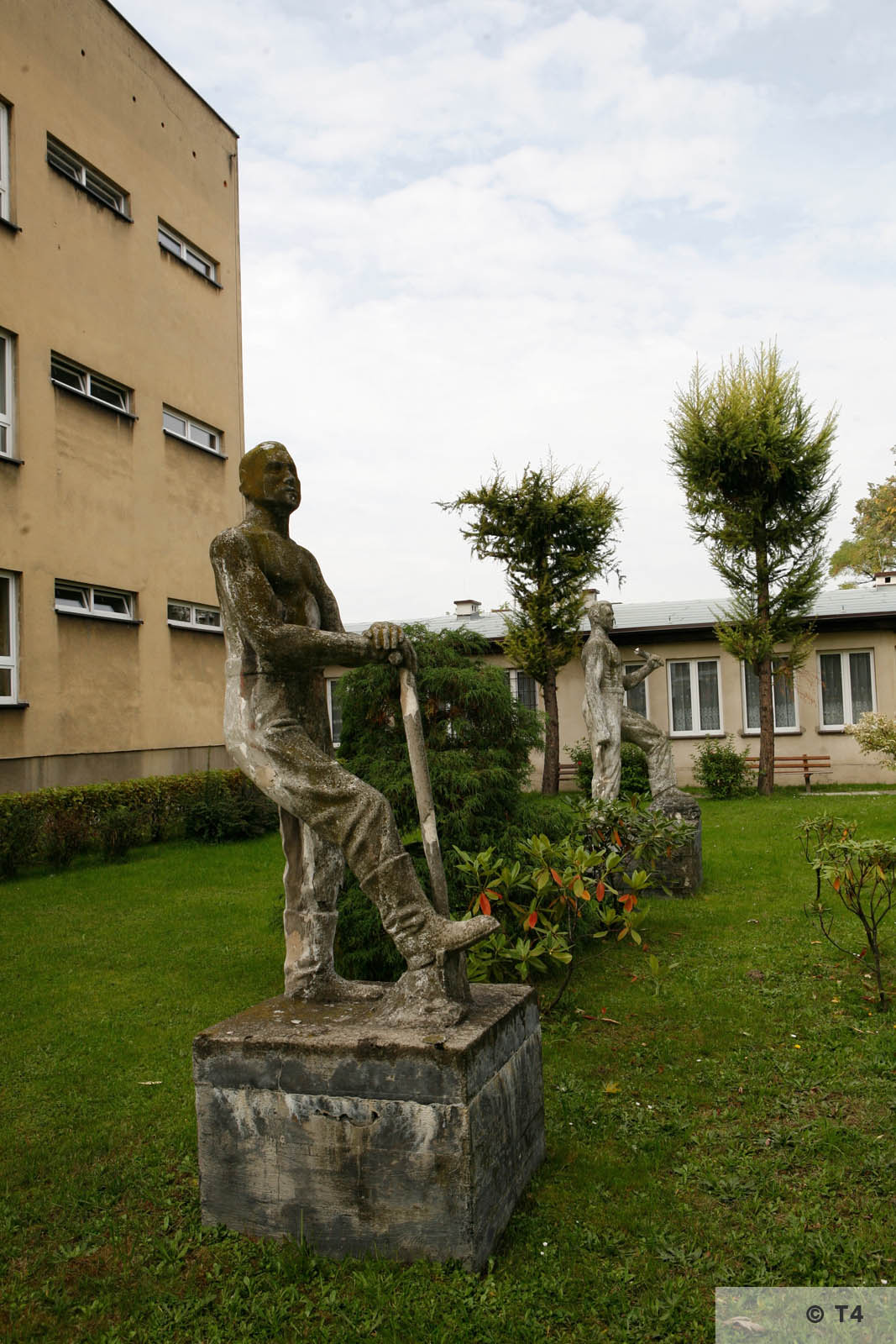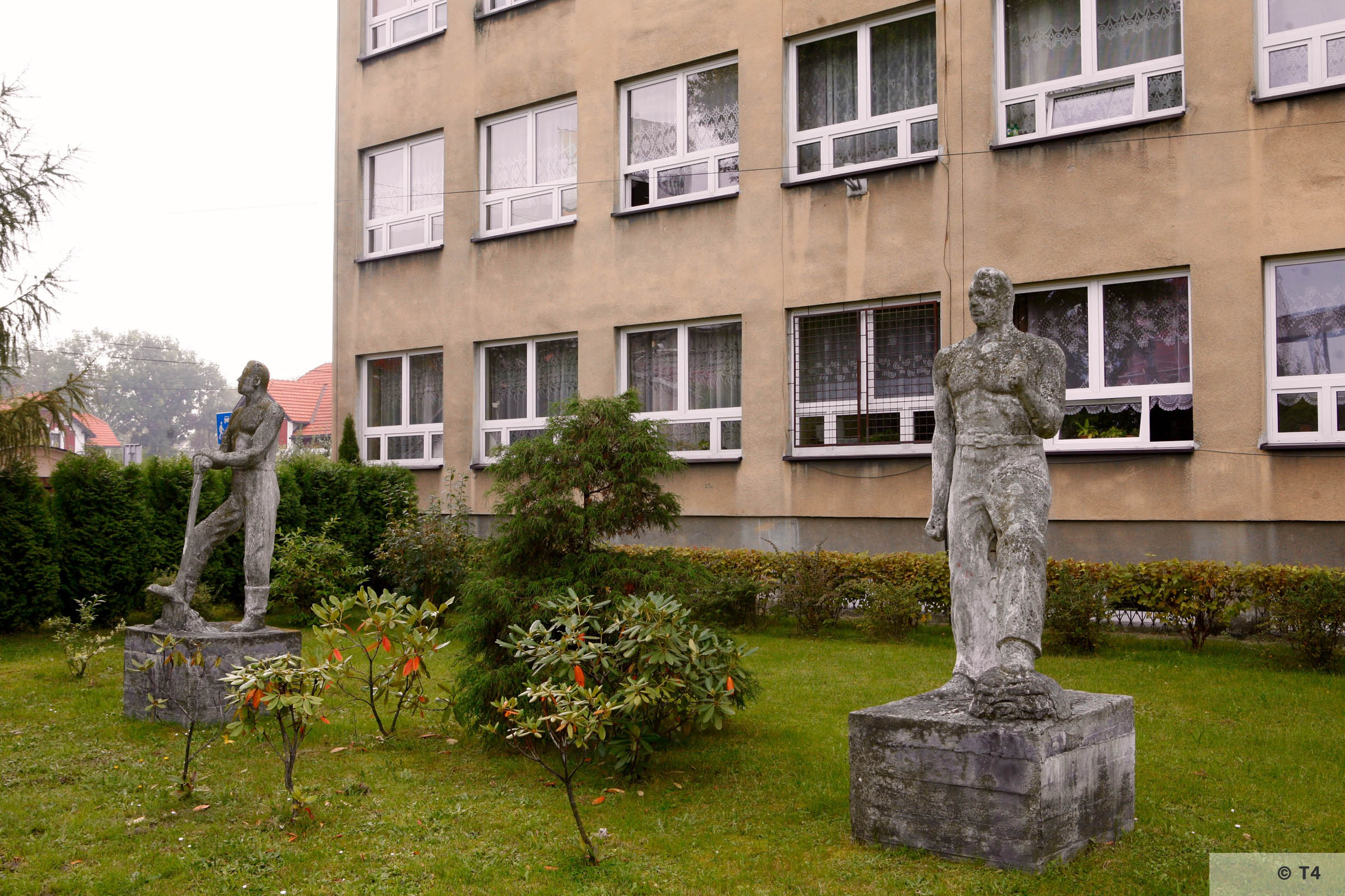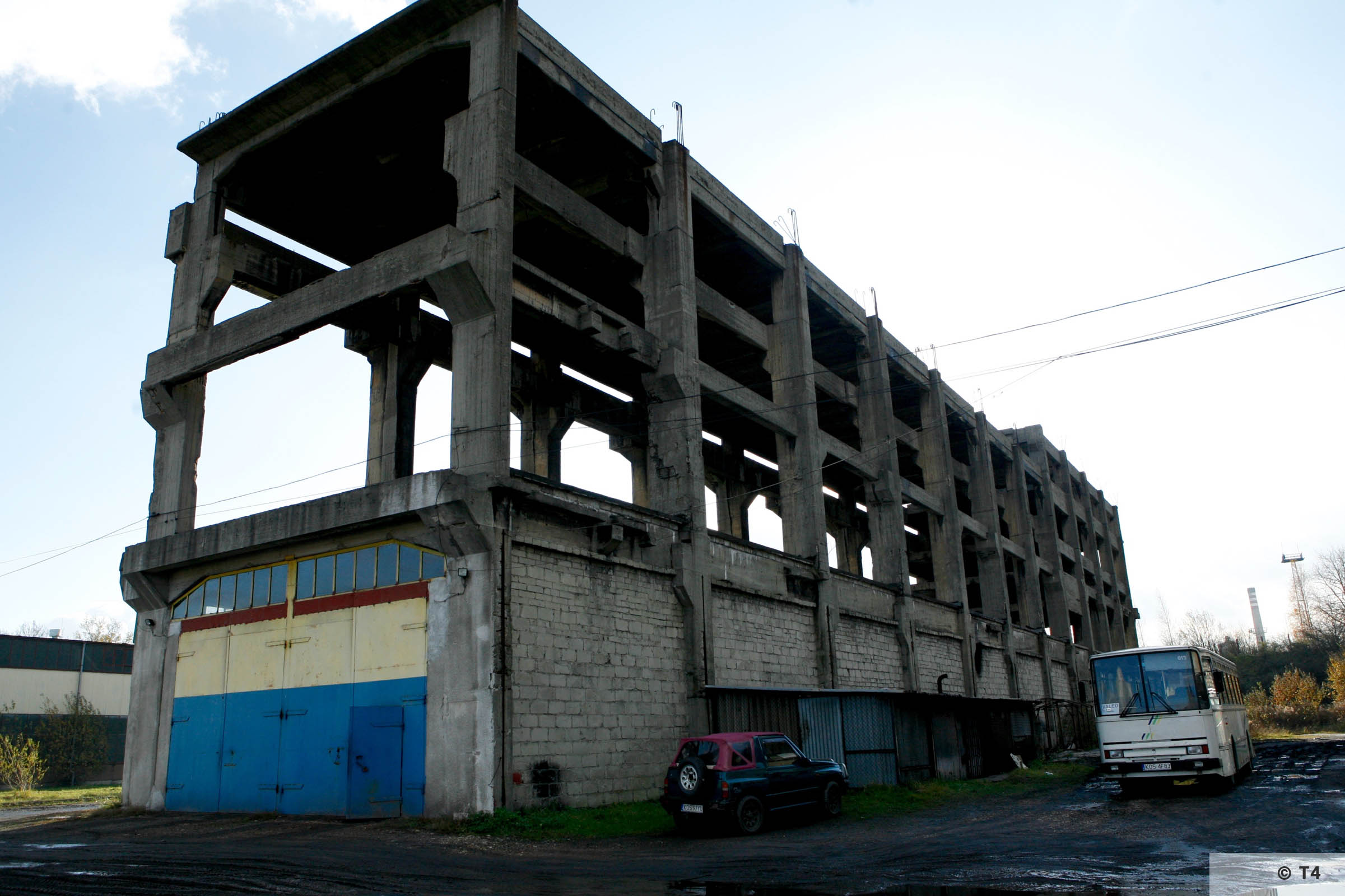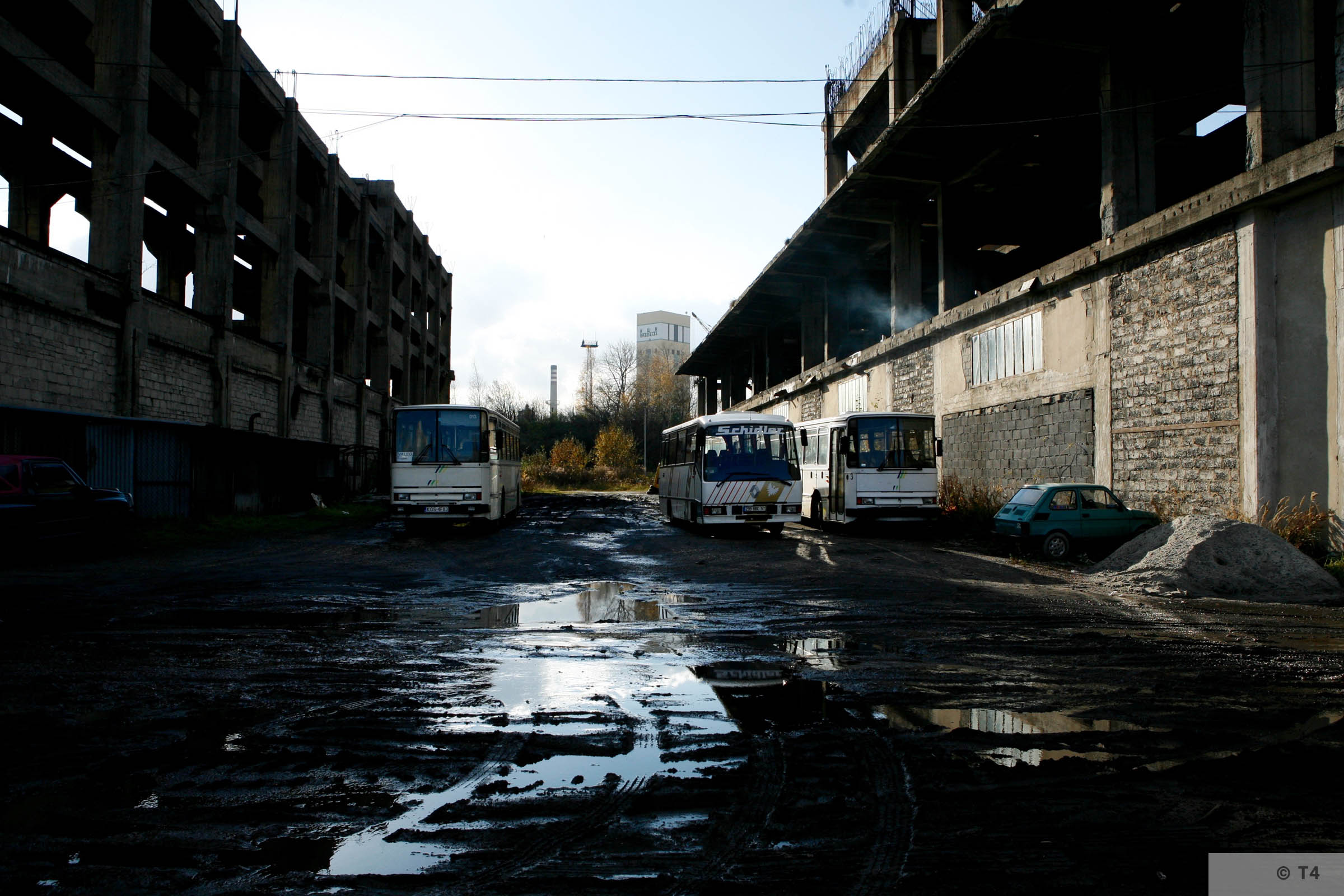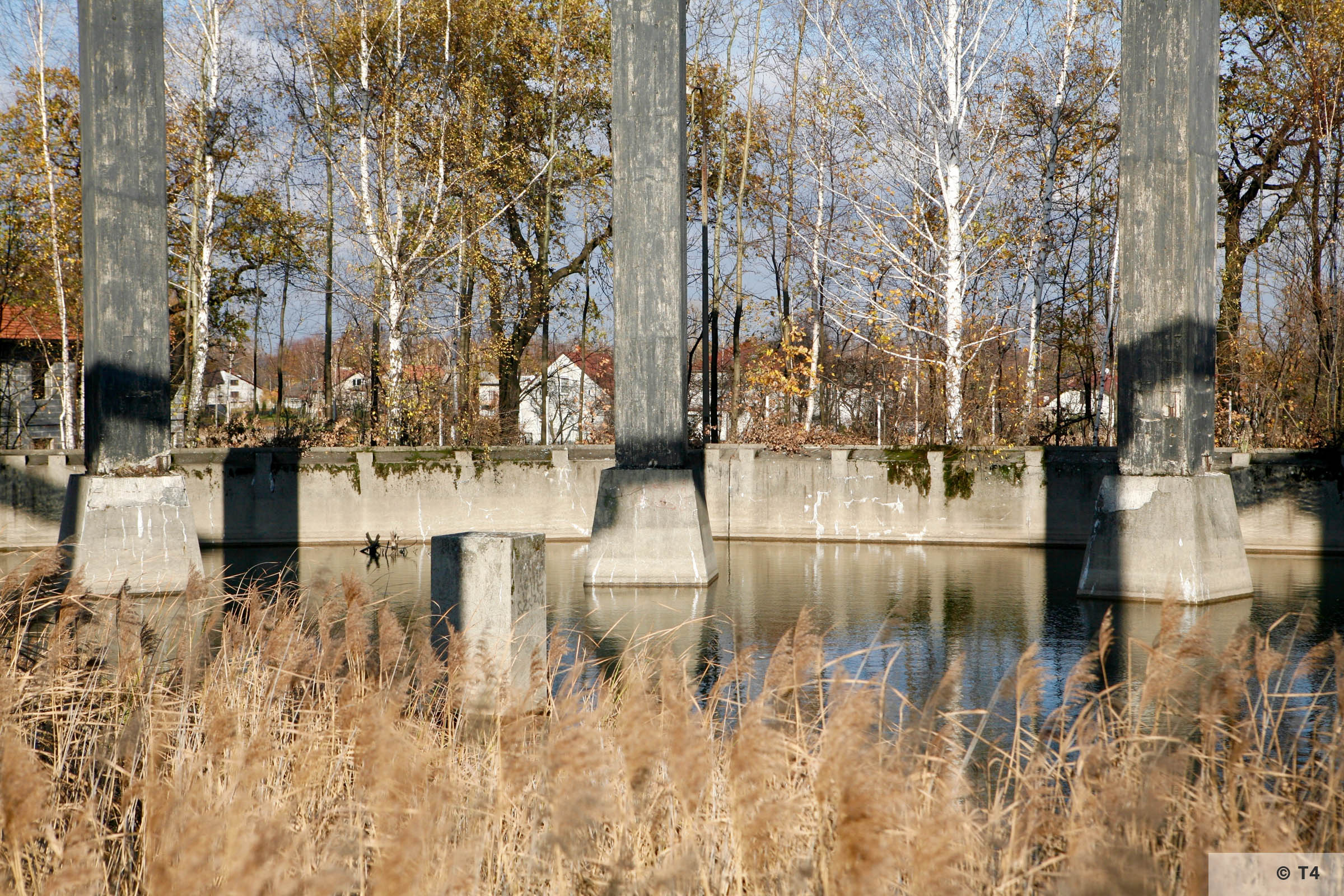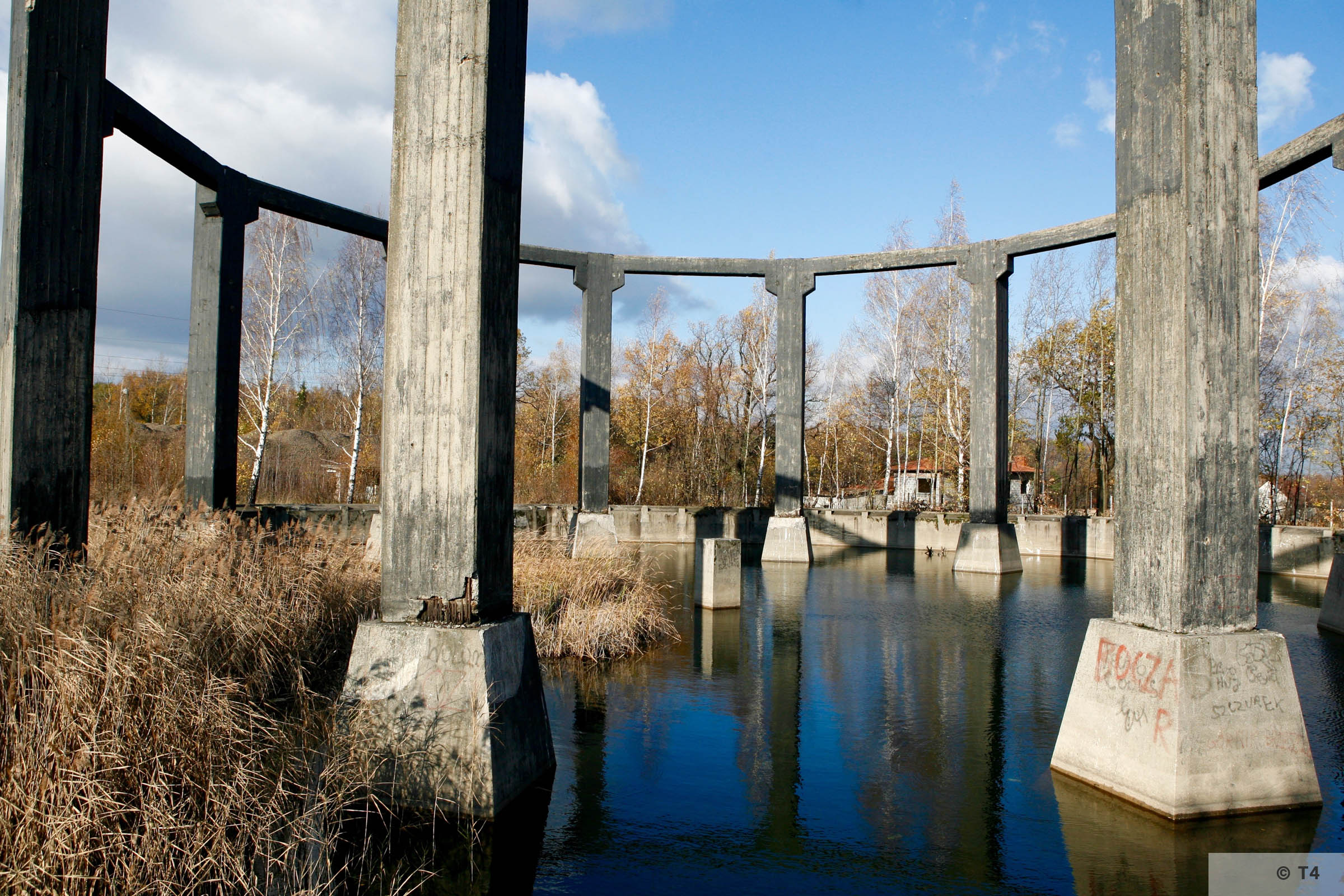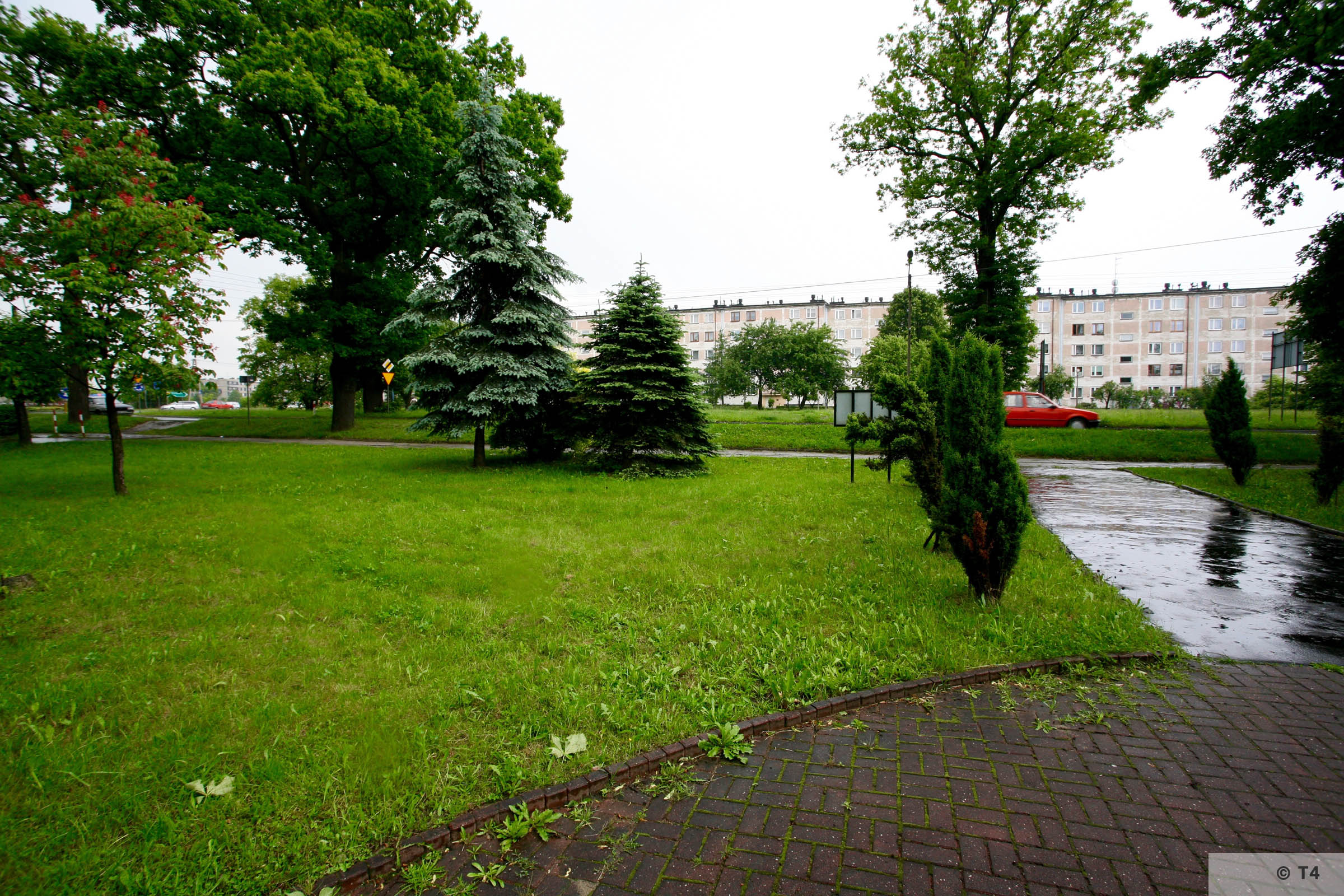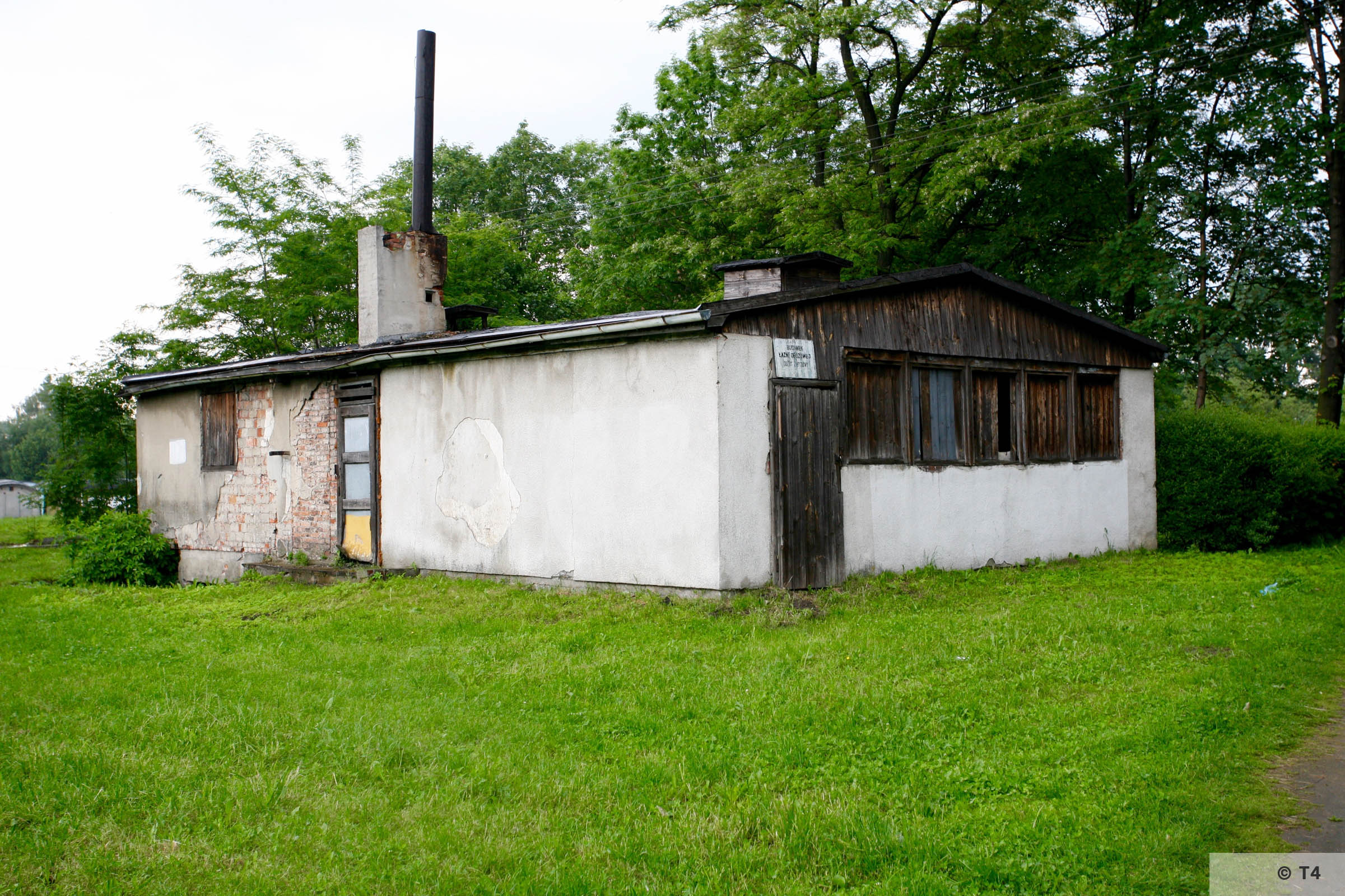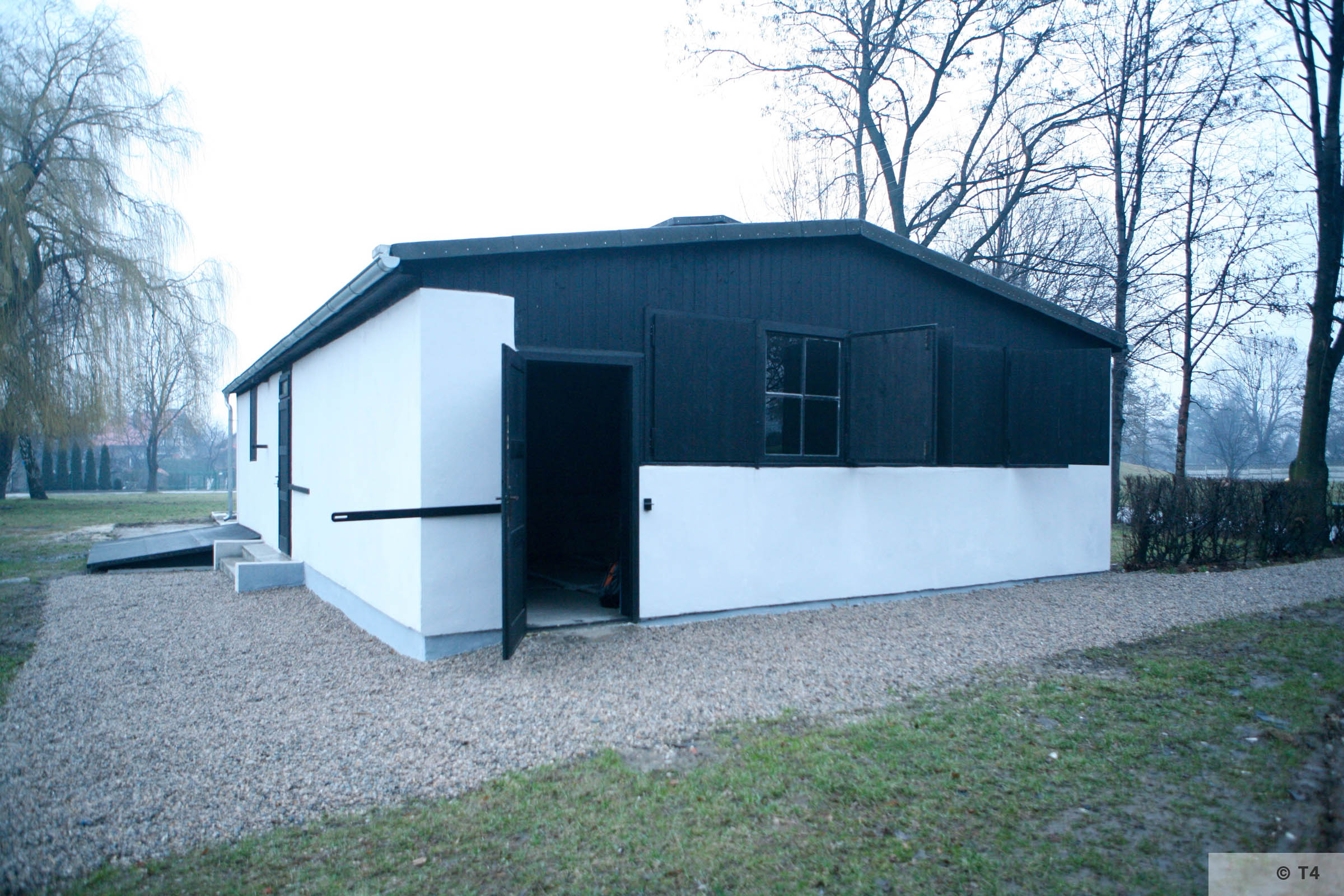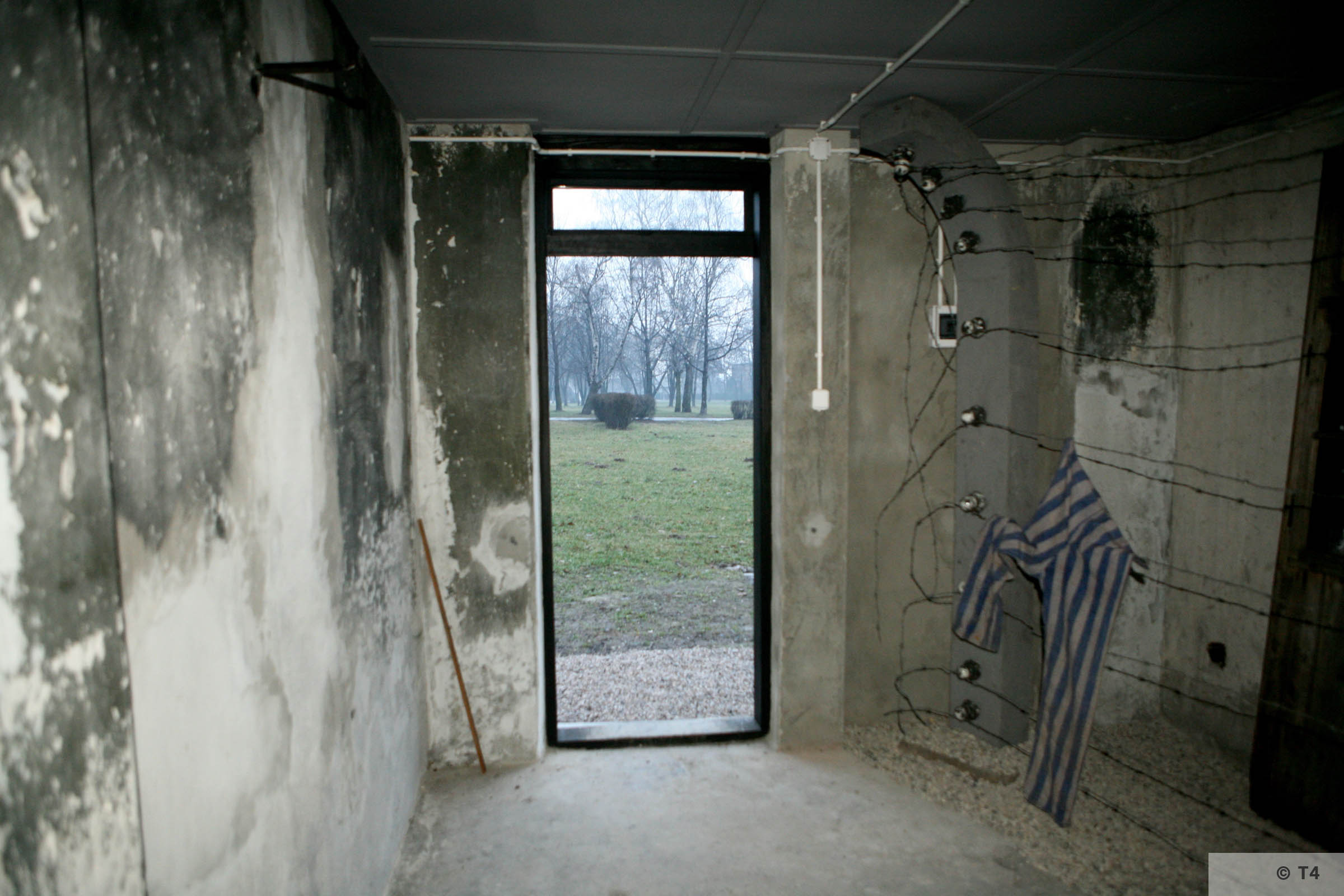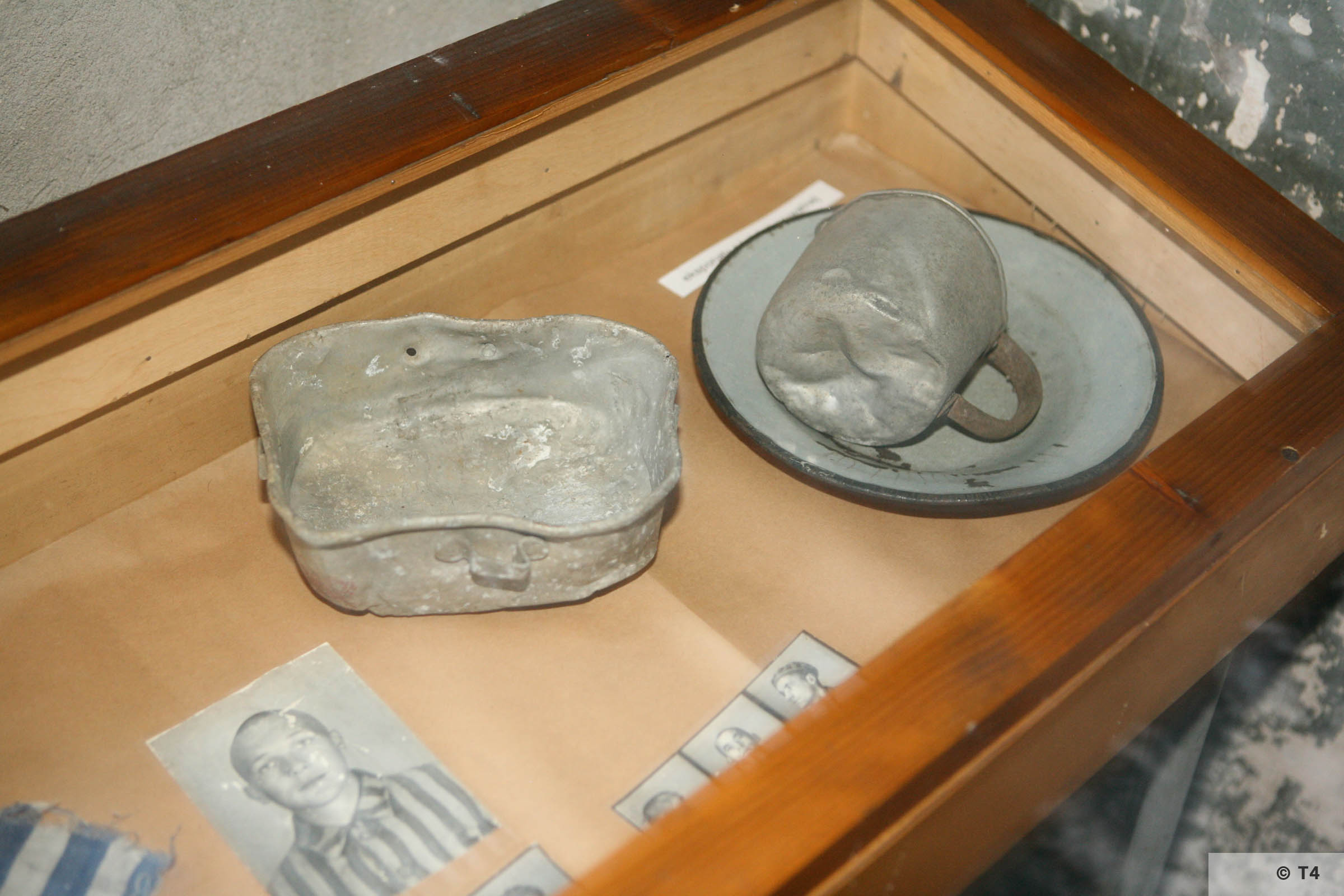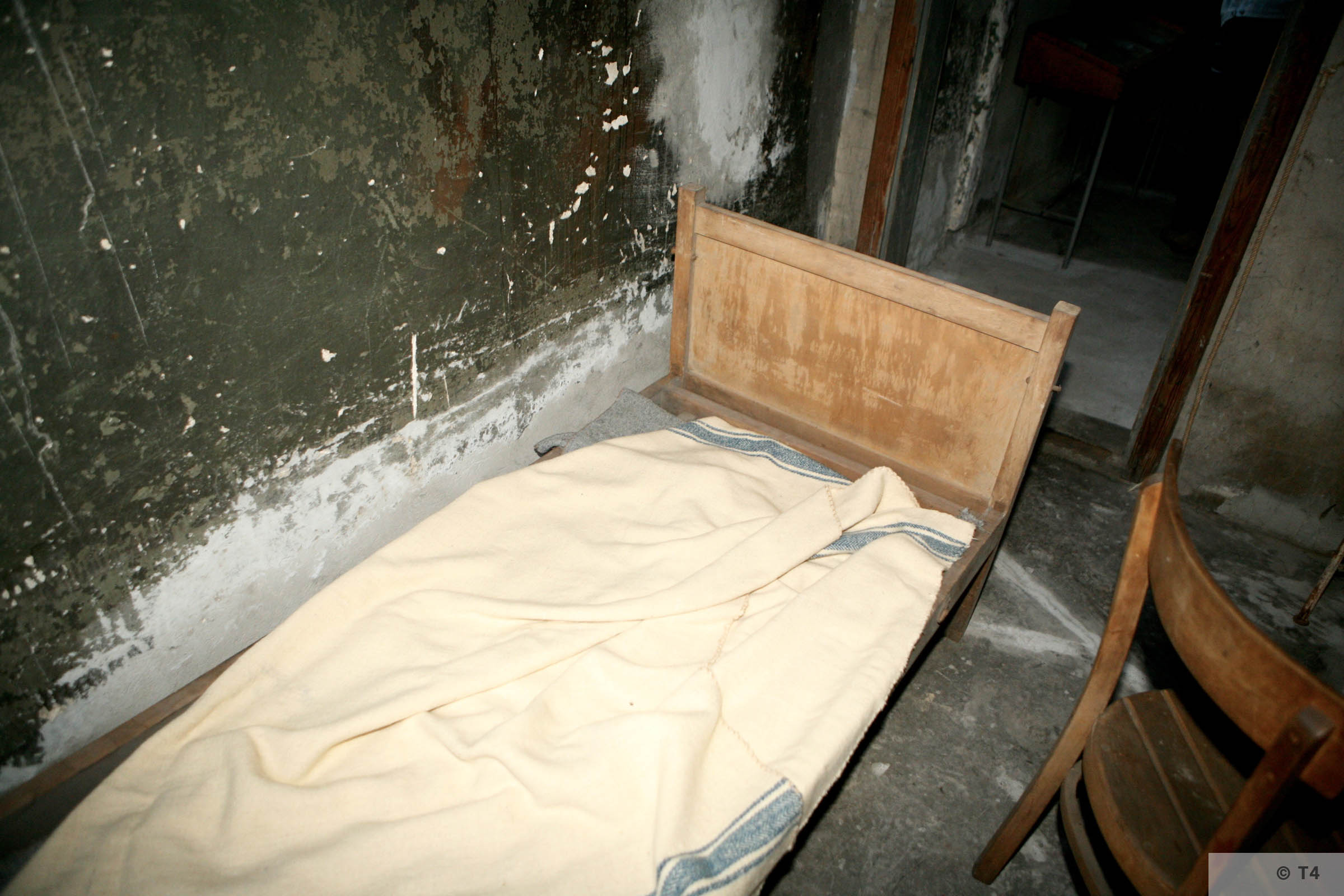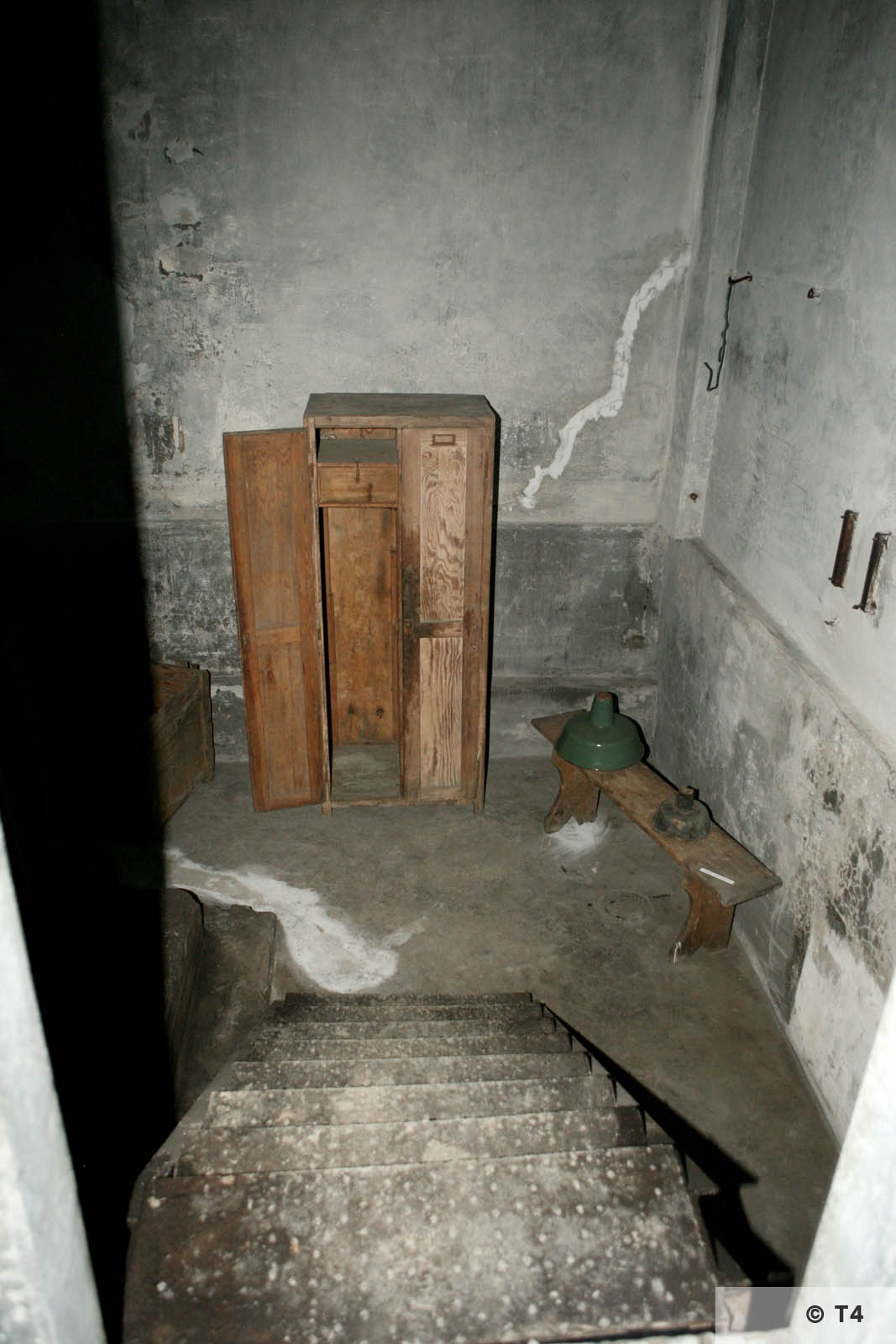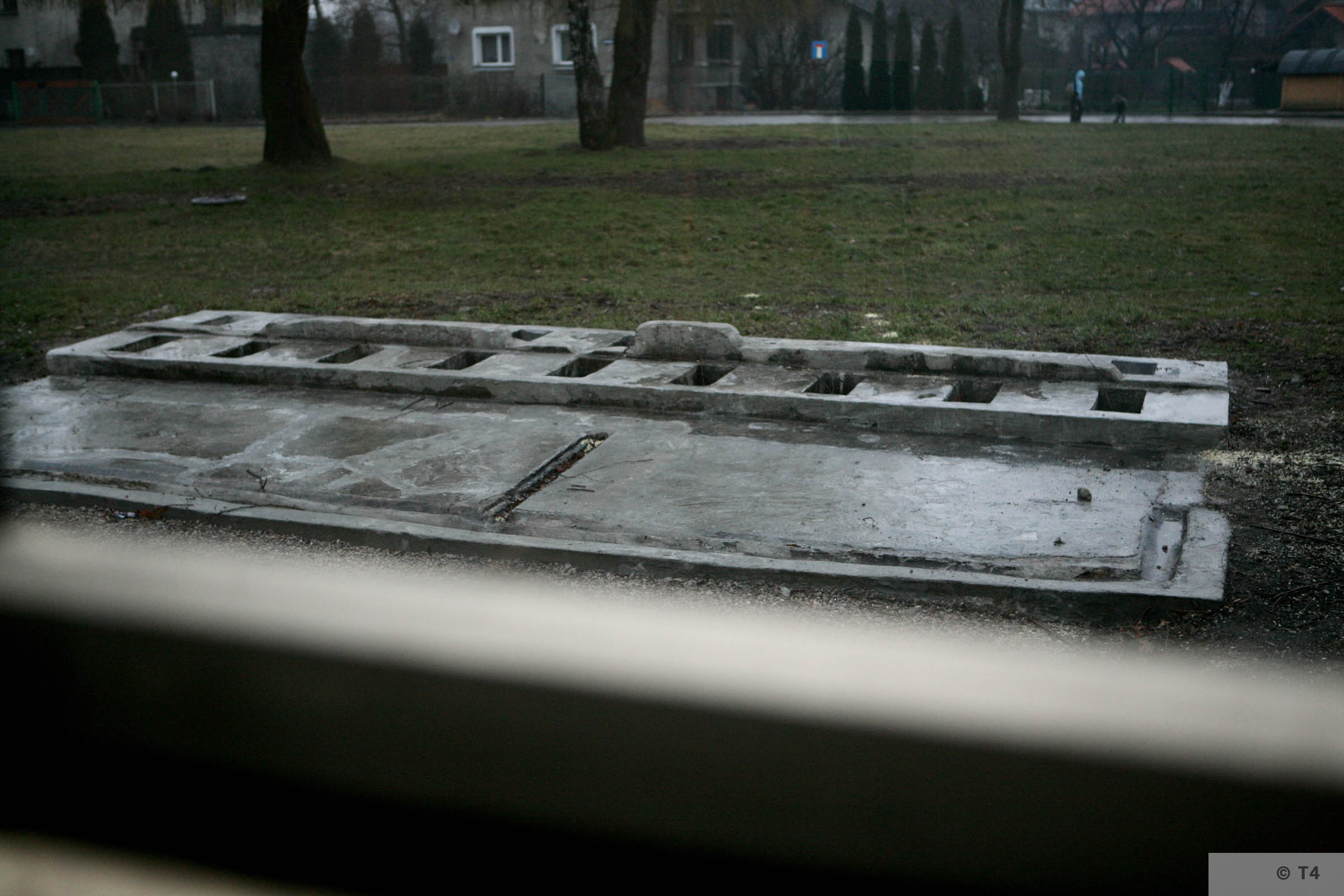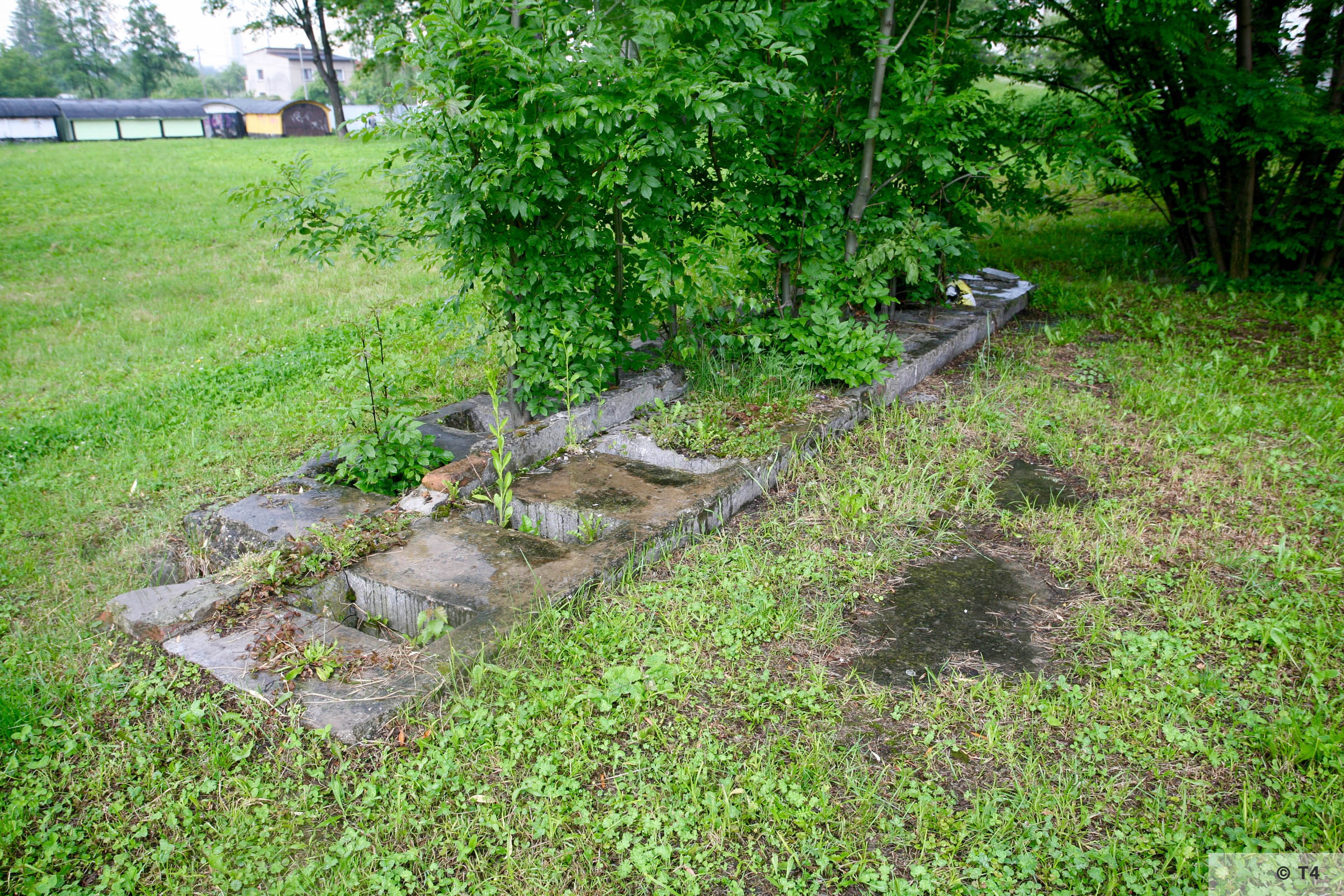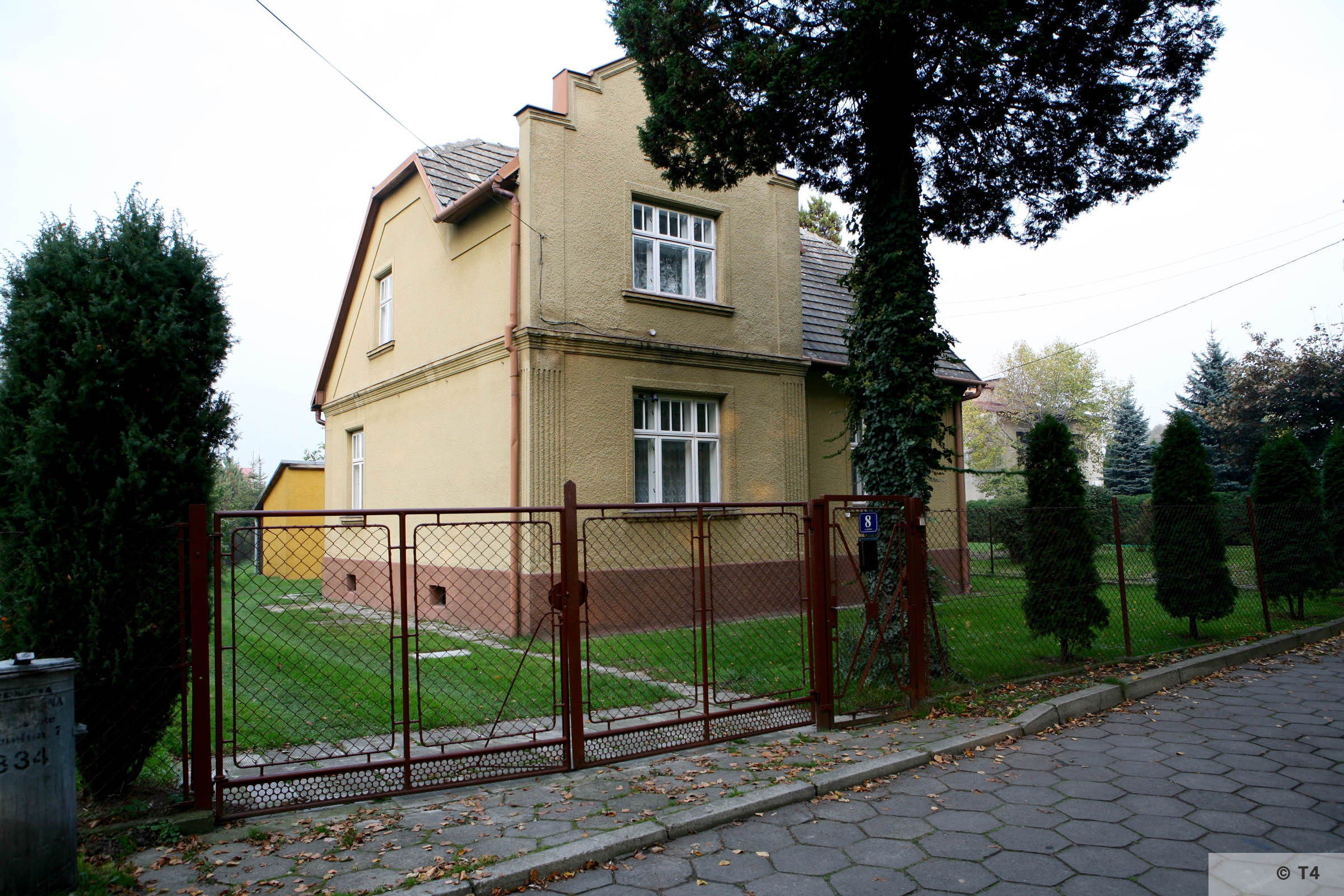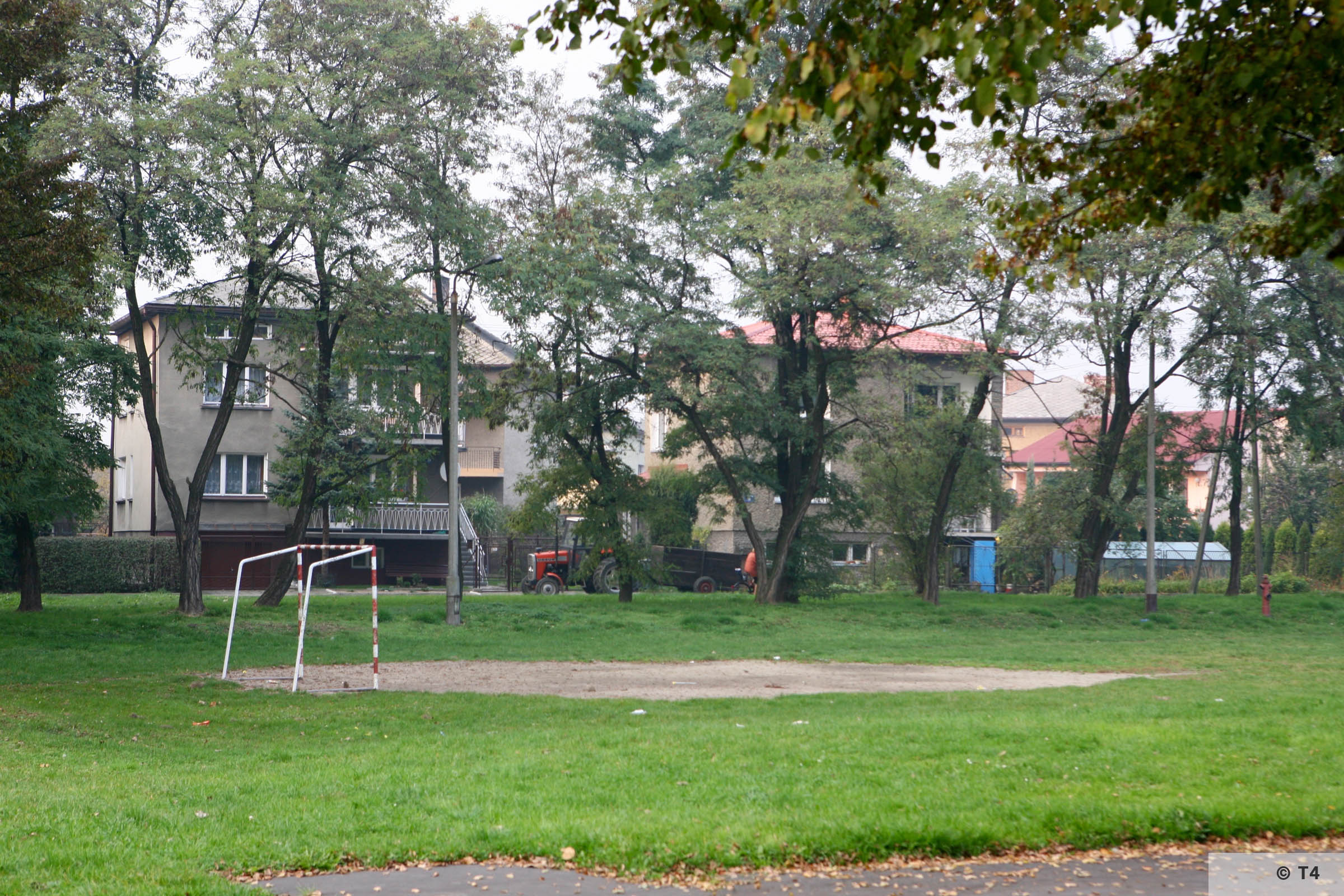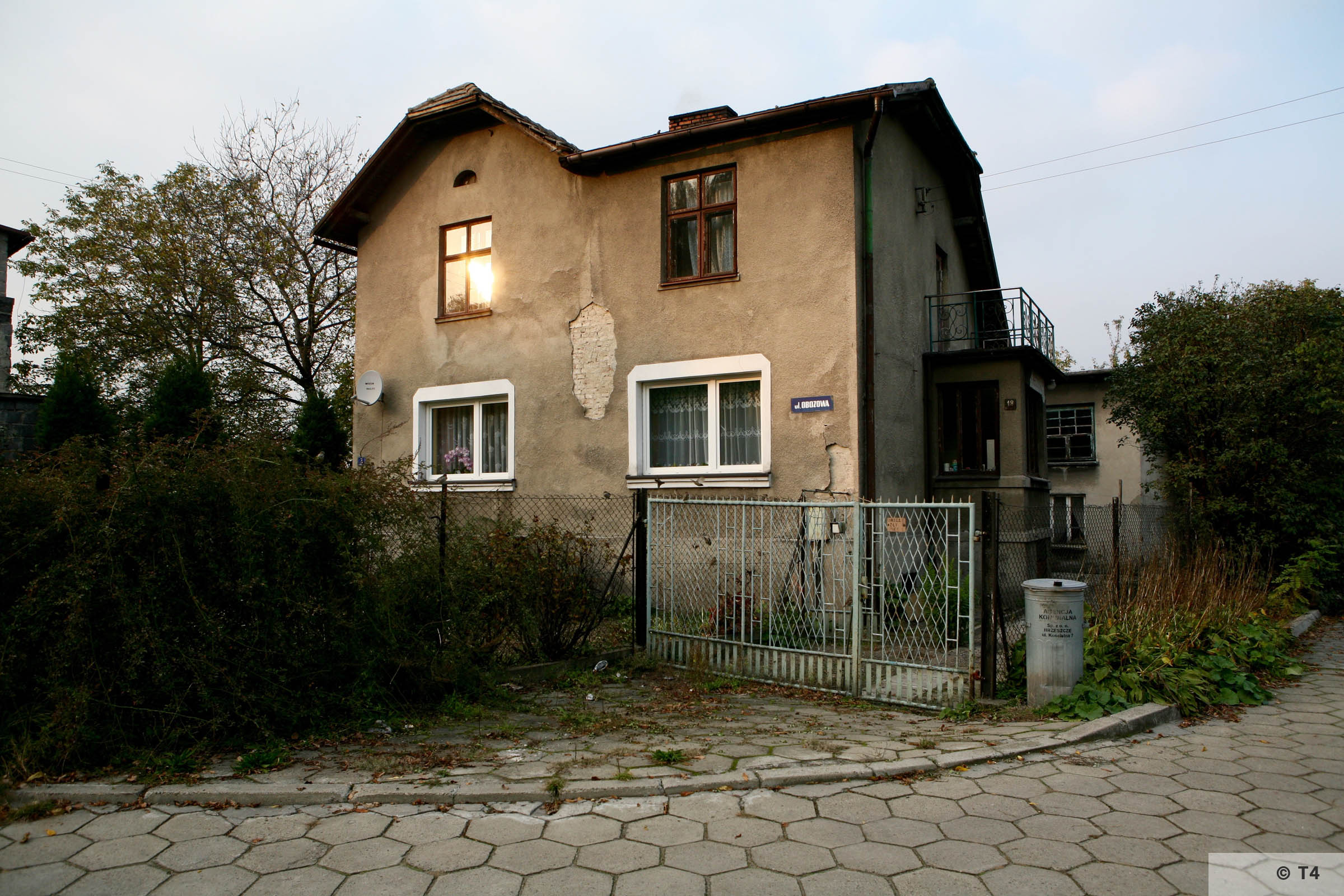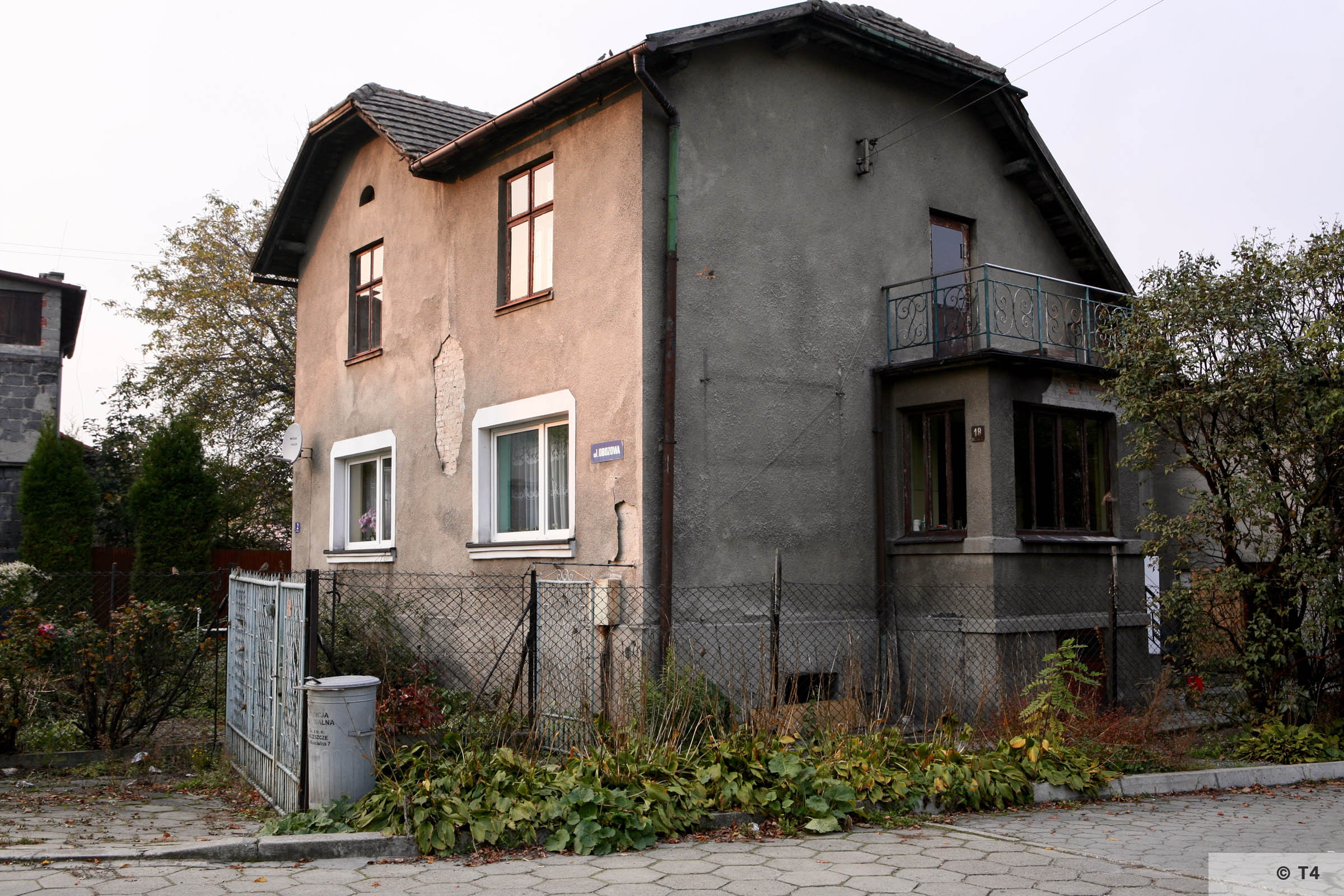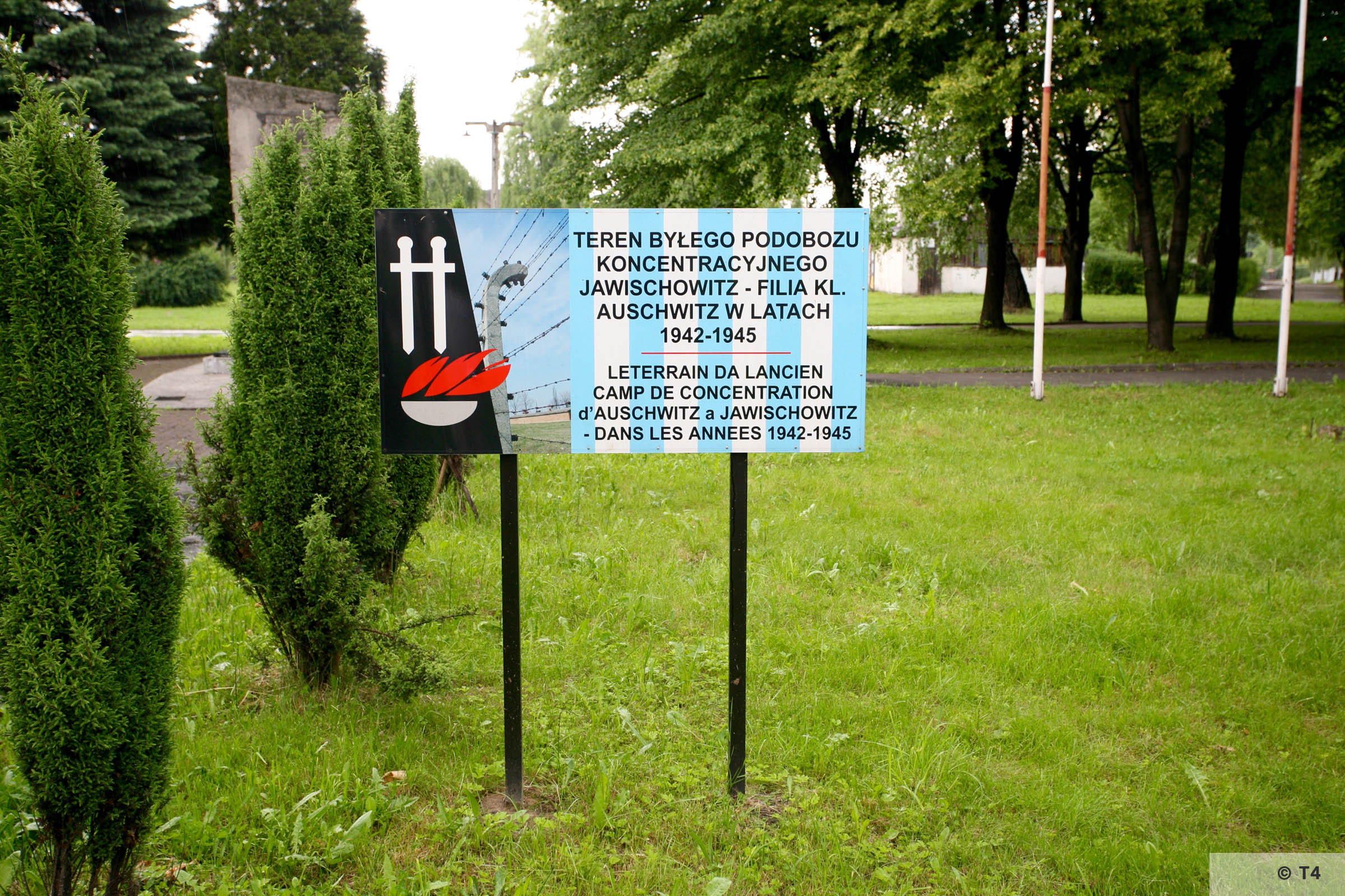Arbeitslager Jawischowitz
Other Name of the camp
Kommando Jawischowitz
Häftlingslager Jawischowitz
Aussenlager Jawischowitz
Grubenlager Jawischowitz
Jawischowitzlager
Commandant of the camp
SS-Unterscharführer Wilhelm Kowol: 15 August 1942 to July 1944
SS-Hauptscharführer Josef Remmele: July 1944 to
SS-Oberscharführer Horst Buss
Number of SS Guards
In the first months of the camps existence the SS garrison numbered 28, and thereafter about 70 originally from the 1st, 2nd, 3rd and 6th Wachkompanie Auschwitz and later from the 2nd Wachkompanie Monowitz.
Work type
Coal Mining: Coal mining and surface construction work at the Brzeszcze-Jawischowitz coal mine. Also construction of a new power plant.
Employer
Bergwerksverwaltung Oberschlesien GmbH der Reichswerke Hermann Göring part of the Reichswerke Hermann Göring
Sub camp buildings
The sub camp took over the buildings of a camp for foreign workers.
Number of prisoners
From 700 to 2,500 male prisoners.
On 17 January 1945 1,988.
Nationality of prisoners
Mostly Jews from Poland, Hungary, France, The Netherlands, Italy and later Hungary. There were non-Jewish prisoners from Poland, the Soviet Union and Germany.
Period of camp existence
15 August 1942 – 18/19 January 1945
Dissolution / Evacuation of the sub camp
18/19 January 1945. The death march was routed through Góra, Ćwiklice, Pszczyna, Poremba, Brzeźce, Pawłowice and Jastrzębie to Wodzisław Śląski. There the column halted for several hours waiting for transport. On 22 or 23 January 1945 the prisoners were deported to the Mauthausen and Buchenwald concentration camps.
Dates of site visits by Tiergartenstrasse4 Association
June 2006, October 2006, November 2006, July 2007, October 2007, November 2007, March 2008
Memorialisation
In the place where the main sub camp gate stood, there is an information board in Polish. There is also a monument symbolizing the martyrdom of the prisoners, by Bogdan Rzenno. The monument was unveiled on September 1, 1983.
Explore more
The History
The history of the companies and the places prisoners worked, the sub camps, the SS guards and memorialisation of the sites.
The History of the Brzeszcze-Jawischowitz (Formerly Andrzej III) Coal Mine
The Brzeszcze coal mine was founded in 1903. In 1918 construction of the third mineshaft, Andrzej III commenced, in the area of Jawiszowice, about 1.6 km from Brzeszcze. All of the mine shafts and auxiliary facilities on the surface and underground constituted one economic unit. Brzeszcze was part of Poland after the First World War.
An intensive expansion of the Andrzej III shaft commenced in 1927. In 1931, a permanent hoisting tower made of steel with a height of 39.5 m was built. A year later, the pithead building, sorting plant, bridges linking the sorting plant with the mineshaft and the machine hall were built. After the full completion of the shaft construction in 1934, production capacity increased significantly.
In 1936, the administration building was completed and in 1937, a boiler room, network of railway track lines and a siding were extended, signalling for the mineshaft and heating of the pithead were installed. The mine became one of the most mechanized in pre-war Poland and architecturally, structurally and technically the entire complex around the Andrzej III mine made it the most modern complex in the mining industry.[1]
The Brzeszcze-Jawiszowitz Coal Mine (formerly Andrzej III) was taken over by the Reichswerke Hermann Goering after the occupation of Poland by the Nazis.
[1] Zaborska-Jagieo, Agnieszka, The State Coal Mine Jawiszowice in Brzeszcze. The history present state, architecture, vision of revitalisation with the participation of creative industries. AGH Journal of Mining and Geoengineering Vol 36 No 1 2012 p. 337 -348.
The Post War History of the Państwowa Kopalnia Węgla Jawiszowice (Formerly Brzeszcze-Jawischowitz) Coal Mine
After the war the former Andrzej III mine was nationalised and became the Państwowa Kopalnia Węgla Jawiszowice (State Coal Mine Jawiszowice). Coal mining at the State Coal Mine Jawiszowice ended in 1995 and it was liquidated in 1999. From 2003, the owner of the Brzeszcze mine (including the State Coal Mine Jawiszowice) was Kompania Węglowa S.A. [1]
[1] Zaborska-Jagieo, Agnieszka, The State Coal Mine Jawiszowice in Brzeszcze. The history present state, architecture, vision of revitalisation with the participation of creative industries. AGH Journal of Mining and Geoengineering Vol 36 No 1 2012 p. 337-348.
The History of the Sub Camp Arbeitslager Jawischowitz
After the takeover of the Brzeszcze-Jawiszowice mine by the Reichswerke Hermann Göring it sought 6,000 prisoners from the Auschwitz concentration camp just 8 km away to work at the mine. The first transport of 150 Jewish prisoners arrived in Jawiszowice on 15 August 1942 and this was the first Auschwitz sub camp where prisoners were employed underground in the mines.[1]
The sub camp Arbeitslager Jawischowitz was one of the largest, with a highly developed organisational structure in the camp. It was located in a former barracks for foreign workers, on the road leading to the mines and Jawiszowice Brzeszcze. Even before the arrival of the first prisoners the existing barracks were surrounded by a wire mesh fence and a double row of electrified barbed wire. Outside the fence, guard towers were built. In the first period of the sub camp, wooden barracks housed prisoners (map reference C, 3, 5), and a camp hospital (map reference E). The barrack standing near the gate was used as a Blockführerstube and Schreibstube (map reference B). There were also barracks for workshops (map reference F), a camp kitchen (map reference D), laundry, washrooms (map reference H), latrines (map reference I). Outside the fence there was a brick building, which contained the offices of the leadership of the camp (map reference J) and quarters for the SS guards (map reference SS).[2]
The camp was expanded in 1943 and 1944 when many new prisoner barracks were built to accommodate the growing number of prisoners.
Based on research conducted by Dr. Strzelecki from the Auschwitz-Birkenau State Museum the number of prisoners in each period of the camp´s existence were:
The Number of Prisoners in the Arbeitslager Jawischowitz Sub Camp[3]
The prisoner accommodation in Jawischowitz was slightly better than at Auschwitz. Andrija Kolin “We lived in wooden barracks in the cold, but the hygienic conditions were not that bad, as the Germans themselves were careful to preserve the workforce.” [5]The prisoners in the sub camp were mostly Jews from Poland, Hungary, France, The Netherlands and Italy. There were none Jewish inmates from Poland, the Soviet Union and Germany. Andrija Kolin a Jewish prisoner from Croatia testified after the war “I was incarcerated in the camp in Jawiszowice near Krakow, some five to six kilometres from Auschwitz, from 22 May 1944 to 1 February 1945. At the time there were 3,500 people in that camp, but I was the only prisoner from Međimurje. All the rest were Hungarians.” [4]
Although there was overcrowding in the barracks, thanks to mandatory baths after work and separate work clothes there were no plagues of lice and therefore less risk of typhus.
The prisoners wore typical striped uniform in the camp. Supplies were brought from the Auschwitz main camp by truck. Given the exhausting work, food rations were modest, leading to the rapid deterioration of the prisoners health. Andrija Kolin a former prisoner described the diet and its results, “We didn’t receive any cooked meals, but only 2 decilitres of black coffee and 6 decagrams of bread in the morning and three fourths of a litre of turnip soup (or similar) with 6 decagrams of bread in the evening. As a result of the above, the prisoners grew so thin that they would lose several dozen kilograms in weight, and due to exhaustion and insufficient food, people were dying by the hundreds.” [6]
Most of the prisoners were employed in the Brzeszcze-Jawiszowice mine, mainly underground. The work was carried out in three shifts: from 06.00 hrs to 14.00 hrs, from 14.00 hrs to 22.00 hrs and a night shift from 22.00 hrs to 6.00 hrs. The prisoners undertook all of the work associated with mining. Some prisoners may also have worked on the contruction of a new power plant at Brzeszcze.
Hard work, exhaustion and hunger resulted in a high mortality rate. The corpses of the dead or murdered prisoners and the most sick and unfit prisoners were transported by truck to the crematoria and gas chambers at Auschwitz II-Birkenau and Auschwitz I.
The guards treated the prisoners brutally, “Moreover, the guards who escorted us to work and oversaw us beat us every day: with hands, rifle butts, and rubber batons, and kicked and beat us in all ways imaginable, so as a result – as far as I know – about 25 people died.” [7]
[1] Strzelecki, Andrzej, Podobóz Jawischowitz [in:] Zeszyty Oświęcimskie [1974] Nr 15, p. 171-178.
[2] Strzelecki, Andrzej, Podobóz Jawischowitz [in:] Zeszyty Oświęcimskie [1974] Nr 15, p. 178.
[3] Strzelecki, Andrzej, Podobóz Jawischowitz, [in:] Zeszyty Oświęcimskie [1974] Nr 15, p. 186.
[4] Testimony of Auschwitz prisoner Andrija Kolin viewed 11 August 2019. https://www.zapisyterroru.pl/dlibra/publication/3680/edition/3661/content.
[5] Testimony of Auschwitz prisoner Andrija Kolin viewed 11 August 2019. https://www.zapisyterroru.pl/dlibra/publication/3680/edition/3661/content.
[6] Testimony of Auschwitz prisoner Andrija Kolin viewed 11 August 2019. https://www.zapisyterroru.pl/dlibra/publication/3680/edition/3661/content.
[7] Testimony of Auschwitz prisoner Andrija Kolin viewed 11 August 2019. https://www.zapisyterroru.pl/dlibra/publication/3680/edition/3661/content.
Literature:
Strzelecki, Andrzej, Podobóz Jawischowitz [in:] Zeszyty Oświęcimskie [1974] Nr 15, p. 171-234.
The SS Guard Unit
The first Jawischowitz sub camp commandant was SS-Unterschaführer Wilhelm Kowol, who was succeeded in July 1944 by SS-Hauptscharführer Josef Remmele. Both were considered exceptionally brutal. The Blockführer position was held successively by SS-Rottenführer Josef Draschner, SS-Sturmmann Heinrich Bischoff, and SS-Sturmmann Aristarch Dobrowolski. The hospital orderlies were: SS-Unterschaführer Günther, SS-Sturmmann Herbert Jörss, SS-Sturmmann Kaufmann, SS-Oberscharführer Rudolf Ullman, SS-Sturmmann Peter Quirin. In the first months of the camps existence the SS garrison numbered 28, and thereafter about 70. The SS men were from the 1st, 2nd, 3rd and 6th Wachkompanie Auschwitz. [1]
Many of the SS guards were young and Volksdeutsche, “It was said that the guards who did all this were Germans from Bačka and Banat, and we could also guess by their accents that they were not from the Reich…. I couldn’t even describe in detail the appearance of particular guards who were responsible for the bloodshed – and these were boys, 17-year-olds – because the terror was such that we didn’t have any contact with them.” [2]
[1] Strzelecki, Andrzej, Podobóz Jawischowitz [in:] Zeszyty Oświęcimskie [1974] Nr 15, p. 179-182.
[2] Testimony of Auschwitz prisoner Andrija Kolin viewed 11 August 2019. https://www.zapisyterroru.pl/dlibra/publication/3680/edition/3661/content.
Literature:
Strzelecki, Andrzej, Podobóz Jawischowitz [in:] Zeszyty Oświęcimskie [1974] Nr 15, p. 171-234.
The SS Guards
References:
BA Ludwigsburg B162/2680 and B162/2679. Many of the SS guards from Arbeitslager Jawischowitz were categorised as Jawischowitz/Golleschau on the listing of SS personnel. It is not clear whether these guards served in one or both of these camps. We have categorised these guards as serving in both Golleschau and Jawischowitz.
Rudorff, Andrea, Jawischowitz in Des Ort des Terrors Band 5, Geschichte der Nationalsozialistischen Konzentrationslager. C.H.Beck 2007, p 264-265.
Zppw-auschwitz.pl Zwiazek Polaków Pomordowanych w Auschwitz. List of 8,500 SS men in KL Auschwitz.
IPN database of Auschwitz SS guards. https://truthaboutcamps.eu/th/form/60,Zaloga-SS-KL-Auschwitz.html.
Strzelecki, Andrzej, Podobóz Jawischowitz [in:] Zeszyty Oświęcimskie [1974] Nr 15, p. 171-234.
The Evacuation of the Sub Camp Arbeitslager Jawischowitz
The evacuation of sub camp Jawischowitz took place in several stages. In the last months of 1944 most of the Polish and Soviet prisoners were evacuated. They were directed to the collective transports from Auschwitz to Mauthausen and Buchenwald concentration camps.
The final evacuation of the sub camp in Jawiszowice occurred on the night of 18 and January 19, 1945 when 1,948 prisoners from Jawischowitz joined a large column leaving Auschwitz-Birkenau. There remained in the sub camp several dozen prisoners too ill or unable to walk. The death march was routed through Góra, Ćwiklice, Pszczyna, Poremba, Brzeźce, Pawłowice and Jastrzębie to Wodzisław Śląski. There the column halted for several hours waiting for transport. On 22 or 23 January 1945 the prisoners were deported to the Mauthausen and Buchenwald concentration camps.
Literature:
Strzelecki, Andrzej, Podobóz Jawischowitz [in:] Zeszyty Oświęcimskie [1974] Nr 15, p. 171-234.
The Post War History of the Former Sub Camp Arbeitslager Jawischowitz
The Auschwitz-Birkenau State Museum visited the site of the former Arbeitslager Jawischowitz between 1960 and 1965 and in 1968 and the former sub camp buildings were basically intact. Due to the lack of housing after the war many families moved into the buildings of the former sub camp. The camp fence had been removed and buildings adapted including the creation of small gardens. Sometime later the sub camp buildings apart from the kitchen were dismantled and the area turned into a park.
The Preservation Status of the Former Sub Camp Arbeitslager Jawischowitz
The Jawischowitz sub camp was situated where the city park is currently located at ul Dworcowa in Brzeszcze. The park’s shape and size corresponds to the area of the former sub camp. In the place where the main camp gate stood, there is an information board in Polish.
There is also a monument symbolizing the martyrdom of the prisoners, by Bogdan Rzenno. The monument was unveiled on September 1, 1983.
Just behind the monument you can see a four part camp light on the former roll call area (map reference 6), which also served as a gallows. Next to it stands the only surviving camp building – the camp bathhouse (Map reference H). There is an information board with an inscription in Polish: “Budynek łaźni obozowej. Obiekt zabytkowy.” (Camp bathhouse building. Historic object.) This building has a length of about 12 m and a width of 6 m, and walls are built of brick, while the gable roof and a fragment of the facade, where the main entrance to the bathhouse was, are made of wood. Unfortunately on the site visits in June and November 2006, this building, although on the list of monuments, was in very poor condition.
A dramatic transformation had taken place by July 2007 when the former sub camp bathhouse had been substantially renovated. We discovered the renovation had been undertaken by a local man with an interest in the Auschwitz sub camps. We met the local man who showed us around the renovated building which he had turned into a small museum using original artefacts from the period of the sub camps, including wardrobes, beds, chairs, tables from SS barracks and plates, bowls, mugs, utensils, medical instruments from the time of the sub camp. Also wash basins and pipes. He subsequently took us on a tour of the area, showing us several surviving houses which may have accommodated SS guards. He also showed us original derelict buildings including wooden barracks around the old mine shaft which may have some connection to the sub camp and the work of the prisoners at the Jawiszowice mine.
This local man then took us to a warehouse where he stored artefacts including dismantled barracks, fence posts, prisoner communal wash basins which he had retrieved from the area around Oświęcim. He also told us he would purchase one of the last remaining brick warehouses in the former Monowitz sub camp also to create a museum.
Behind the bathhouse building there are undefined foundations with inlet holes deep into the ground, the purpose of which could not be precisely determined. Apart from the remnants described, there are no other elements of the former sub camp in the park.
Around the area of the former Jawischowitz sub camp there are many houses which may have been used as accommodation by SS guards.
In Brzeszcze, there exists the Brzeszcze and Brzeszcze-Jawiszowice coal mines, where prisoners worked in the mine shafts: Andrzej I, Andrzej II, Andrzej III and Andrzej IV.
Around the Andrzej III mine shaft there still exist many wooden barracks which would seem to be from the period when the mines in Silesia employed slave labourers, POWs and prisoners from Auschwitz.
Entering Brzeszcze by road No. 933 from the direction of Oświęcim, on the right are the unfinished structures of the proposed Andreas mine power plant located at ul Przemysłowa. Most of the prisoners of the Jawischowitz sub camp working on the surface were employed in the construction of this power plant. Still surviving are two parallel, approximately one hundred meters long and several meters high, huge reinforced concrete buildings in the form of girders and trusses mounted on a huge foundation, which take the form of gigantic reinforced concrete trusses. These facilities, which were not so much buildings as support structures, were to encompass a boiler, turbine, generators and transformers that were the basic elements of a coal power plant. This is evidenced by the coal chute visible on one of the constructions. At the back, a few dozen meters from of the structures, there is an unfinished cooling tower. It is a reinforced concrete structure built on a circular foundation with a diameter of about 15 meters, and a sprinkler bowl currently flooded. Inside the bowl, several meter long load bearing columns of the cooling tower were connected by horizontal beams, on which the water distribution device would have been mounted inside the cooling tower.
Memorialisation
The Jawischowitz sub camp was located where the city park is currently located at ul Dworcowa in Brzeszcze. The park’s shape and size corresponds to the area of the former sub camp. In the place where the main camp gate stood, there is an information board in Polish: “Teren byłego podobozu koncentracyjnego Jawischowitz – filia KL Auschwitz w latach 1942-1945” and in French “Le terrain du camp de concentration d’Auschwitz a Jawischowitz – dans les année 1942-1945” (The area of the former Jawischowitz concentration sub-camp – Auschwitz branch in 1942-1945)
There is also a monument symbolizing the martyrdom of the prisoners, by Bogdan Rzenno. The monument was unveiled on September 1, 1983. It represents a fragment of the conduct of prisoners returning from the mine to the camp. The following text in Polish was carved on one of the walls of the monument: “Jesteśmy jak żywe kamienie, twarde niezłomne głazy. Nie spalą nas żadne płomienie a ogień nie czyni nam skazy. Jesteśmy jak żywe kamienie, samotne bezdomne skały. Rzeźbiły nas zimne strumienie i żarem ziejące upały. Jesteśmy jak żywe kamienie w sercu szatańskich piramid.” (We are like living stones, hard, steady boulders. No flames will burn us and the fire will not blemish us. We are like living stones, lonely homeless rocks. Cold streams and hot air sculpted us. We are like living stones in the heart of Satan’s pyramids.) Under the monument there is a plaque with an inscription in Polish and French: “W latach 1941-1945 hitlerowscy barbarzyńcy wymordowali więźniów różnych narodowości z podobozu w Jawiszowicach. Cześć ich pamięci / Ici pendant les année 1941-1945 les barbares hitleriens ont exterminés des milliers de prisonniers de differentes nations. Honneur a leurs memoires.” (In the years 1941-1945, Nazi barbarians murdered prisoners of different nationalities from the Jawicowice sub camp. Honour to their memory).
One of the most interesting objects related to the Jawischowitz sub camp are two sculptures of miners from around 1944 standing on the square of the District Complex No. 6 Vocational and General Schools at ul Kościuszki in Brzeszcze. During the time of the Jawischowitz sub camp they stood on the assembly ground in a visible representation of the prisoners. These sculptures, were created on the orders of the SS, by a Jewish prisoner from Łódź, Jacques Markiel, who also made decorative items for the private needs of SS officers. [1] In addition, he created various items that were intended by the Germans to play a decorative role in the camp. The sculptures were made of cement-lime mortar and depict a man shovelling earth and a miner with a pickaxe and mining lamp. Each of them measures about 2.5 meters in height. At the time of the site visit by Tiergatenstrasse4Association in 2006, these sculptures were still standing in front of the school complex. Later, we understand the originals were taken to the Auschwitz-Birkenau State Museum. The statues in the years after the war subject to the destructive effects of weather conditions. The growing number of cracks brought the risk of the statues being damaged irreparably. Therefore, as part of an agreement between the Auschwitz-Birkenau State Museum and the District Authority Office of Oświęcim (Starostwo Powiatowe w Oświęcimiu) in June 2007, it was decided to transfer the originals to the Auschwitz-Birkenau museum and copies of Markiel’s sculptures were placed in front of the school.
[1] APMAB. Zespół Oświadczenia,witness testimonies: Stanisław Dworakowskiego, Vol. 47, p. 119; Zdzisława Pałasińskiego, Vol 54, p. 20; Witolda Tokarza, Vol 63, p.16.
Auschwitz-Birkenau State Museum Site Visit
The Auschwitz-Birkenau State Museum visited the site of the former Arbeitslager Jawischowitz sub camp in the period 1960 to 1965 (17 photographs were taken) and 1st July 1968 (41 photographs were taken) including:
- “Barracks No 1 and 2 and adjoining brick section.” (photo reference 14335),
- “Barracks No 3 and 4.” (photo reference 14338),
- “Barrack No 7.” (photo reference 14340),
- “Entrance to the cells.” (photo reference 14343),
- “Building No 32 – command office building.” (photo reference 14373) (map reference J),
- “Fragment of the interior in one of the camp’s buildings.” (photo reference 21080/9),
- “Roll call square with characteristic lamp in 1968” (photo reference 14363) (map reference 6),
- „Baths in 1968.“ (photo reference 14350) (map reference H).
There are also 10 photographs of Markiel´s sculptures in their original location in the sub camp (photo references 21080-10 to 21080-19).
Other Photographs / Site Visits
The album known as the Höcker album was donated to the USHMM in January 2007 by an American counter-intelligence officer, who wished to stay anonymous. The album contains 116 black-and-white photographs, depicting mostly SS officers from Auschwitz. On the first page it is signed: “With the SS Commandant Stubaf. Baer, Auschwitz 06/21/1944.” It has been established beyond doubt that the album belonged to SS-Obersturmführer Karl Höcker, adjutant to the commandant of Auschwitz, SS-Sturmbannführer Richard Baer. Evidence of this is not only the signed first page, but also that Höcker is the only person who appears alone in some of the photos. Most of the photographs are from the summer of 1944, from the Solahütte vacation home for Auschwitz SS camp members. However, there are also a group of 8 photographs (possibly more) of a visit by SS-Obersturmführer Karl Höcker and other SS men to a mine in Jawischowice sometime between 1st and 10th September 1944. The mine is probably the Brzeszcze-Jawiszowice coal mine where many of the prisoners employed from the sub camp worked.
The USHMM has kindly allowed us to use the photographs of the visit of Höcker and other SS officers to the Brzeszcze-Jawiszowice coal mine and provided the following captions:
- “SS officers, including several SS physicians, enjoy drinks around a table drinking following a visit to a coal mine.” Seated on the left side are Karl Höcker, unknown, Dr. Heinz Baumkoetter, Dr. Fritz Klein and Dr. Eduard Wirths. At the far end of the right bench is probably Alfred Trzebinski. The original caption reads “Nach der Ausfahrt” (after the outing [exiting the mine]). (photo reference 34796),
- “SS officers, including several SS physicians, sit around a table drinking probably following a visit to coal mine.”The original caption reads “Nach der Ausfahrt” (after the outing [exiting the mine]). Among those pictured are Karl Höcker (far left), Dr. Fritz Klein (left hand side, end of table), Gerhard Gerber (right, third from front), Dr. Enno Lolling (four from front), Alfred Trzebinski, and Dr. Willi Schatz (right side, end). (photo reference 34797),
- “SS officer Karl Höcker visits a coal mine in Jawischowitz near Auschwitz.” The original caption reads “Als Bergmann” (as a miner). (photo reference 34820),
- “Auschwitz personnel, including many physicians, enjoy drinks at an outdoor table drinking following a visit to a coal mine.” The original caption reads “Nach der Ausfahrt” (after the outing [exiting the mine]) (photo reference 34795),
- “A large group of SS medical personnel visit a coal mine near Auschwitz following the dedication of the SS Lazerette.” The original caption reads “Besichtigung eines Kohlenbergwerks.” (visiting a coal mine). Seated in the front centre is Gerhard Gerber. Seated behind him (left to right) are Waldemar Wolter, possibly Weber, Alfred Trzebinski, Richard Trommer, and Fritz Klein. Standing left to right are Willy Frank, unidentified, Wilhelm Witteler, unidentified, Max Blancke, Karl Höcker, Enno Lolling, Eduard Wirths, Heinz Baumkoetter and Sohatz. (photo reference 34826),
- “A large group of SS officers visit a coal mine near Auschwitz.” The original caption reads “Besichtigung eines Kohlenbergwerks.” (visiting a coal mine)
Karl Höcker is in the center with a cane. Behind Höcker is Dr. Fritz Klein. Pictured on the left are Heinz Baumkoetter, Eduard Wirths and Alfred Trzebinski. Walking on the left with a cigarette is Dr. Enno Lolling. (photo reference 34827), - “Two SS officers visit a coal mine near Auschwitz.” The original caption reads “Besichtigung eines Kohlenbergwerks.” (visiting a coal mine). Pictured on the right is Karl Höcker. (photo reference 34828),
- “A large group of SS officers visit a coal mine near Auschwitz.” The original caption reads “Besichtigung eines Kohlenbergwerks.” (visiting a coal mine). Pictured from left to right are unknown, Dr. Heinz Baumkoetter, Gerhard Gerber, Dr. Enno Lolling (partially obscured) , Karl Höcker (center), Dr. Eduard Wirths and Alfred Trzebinski. (photo reference 34829).

